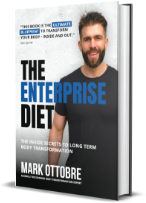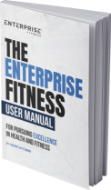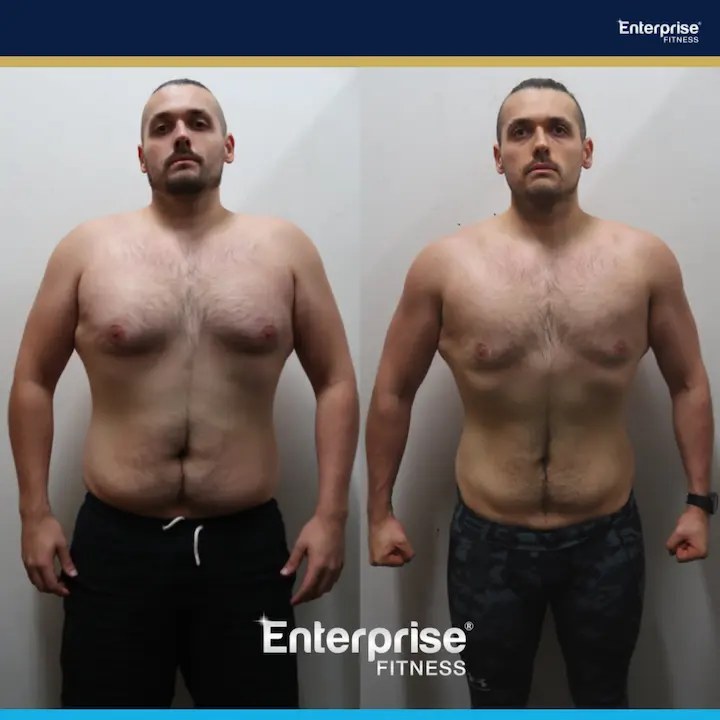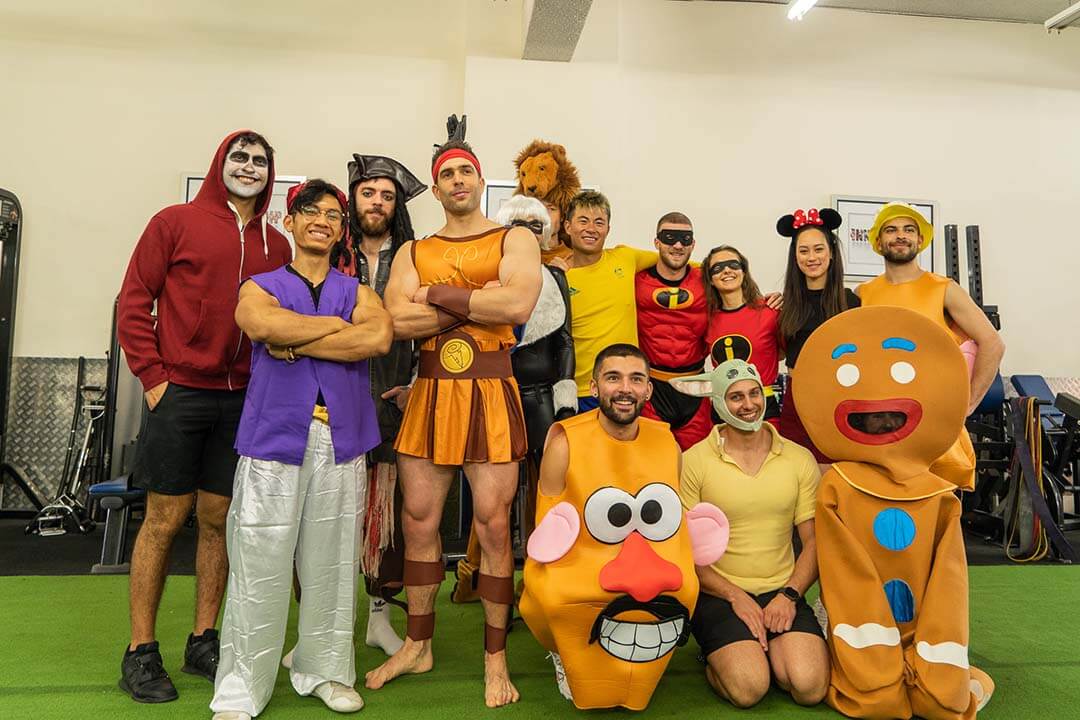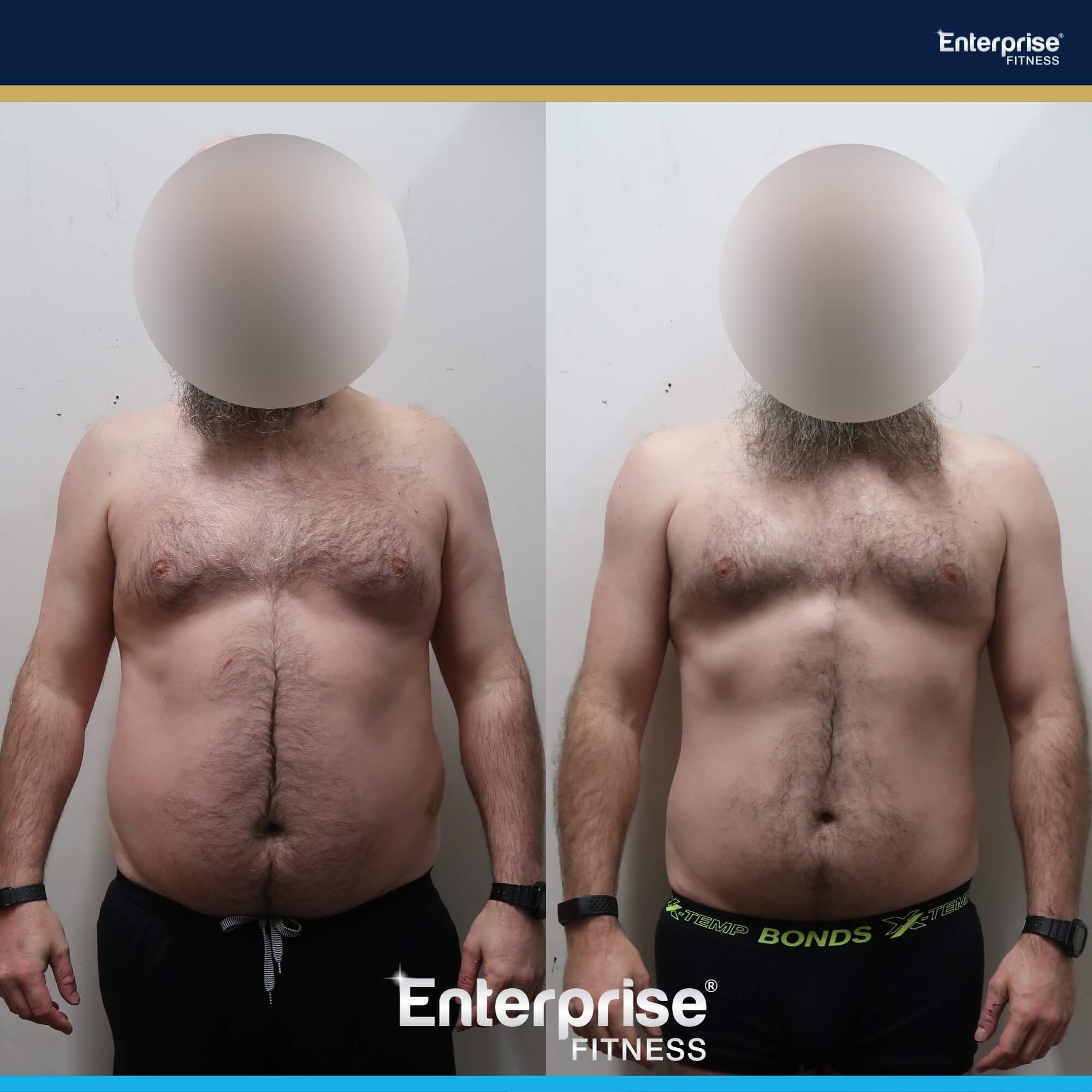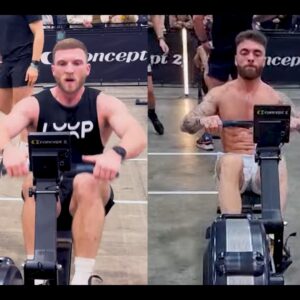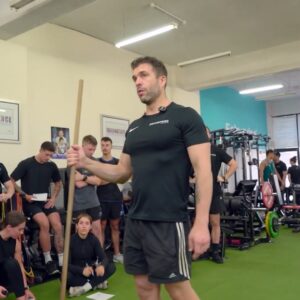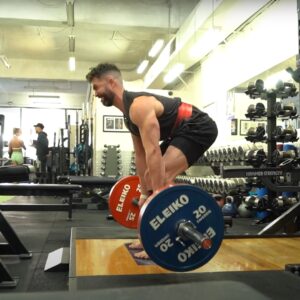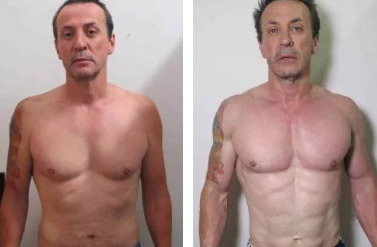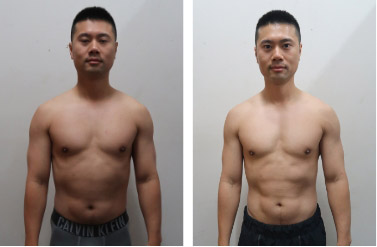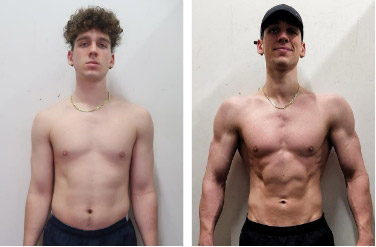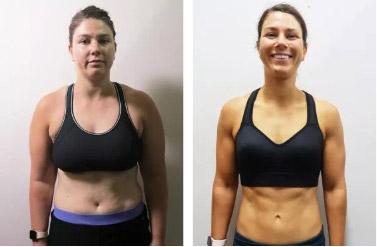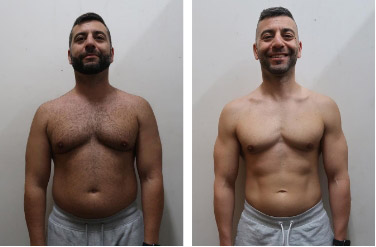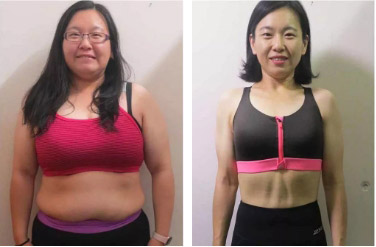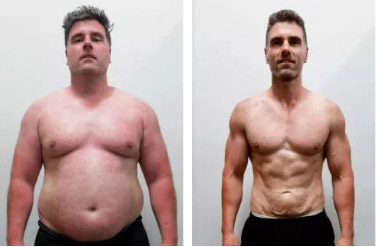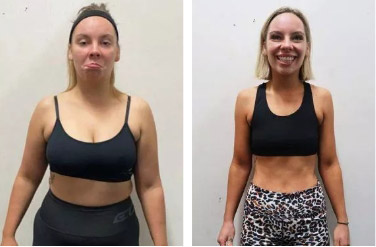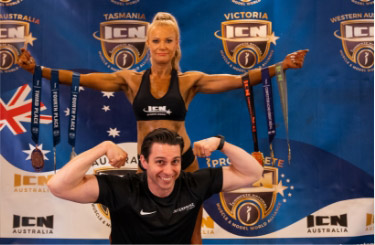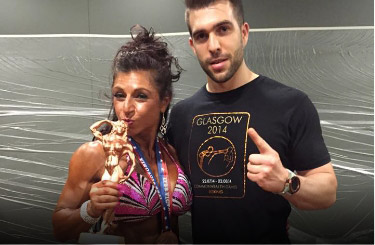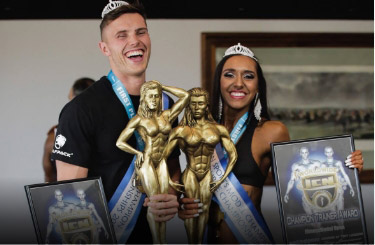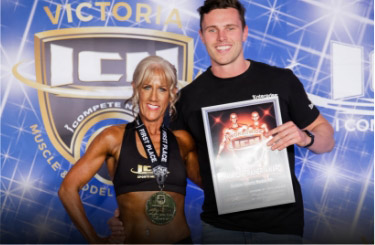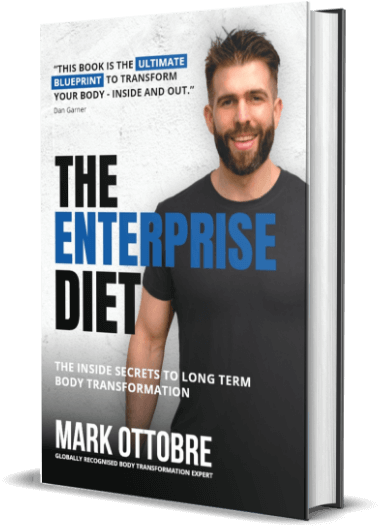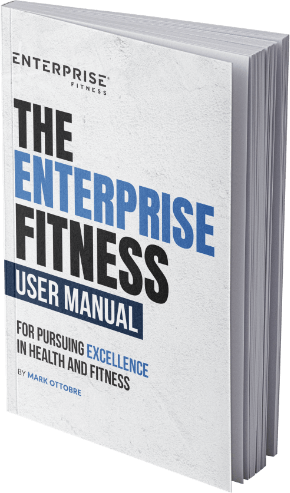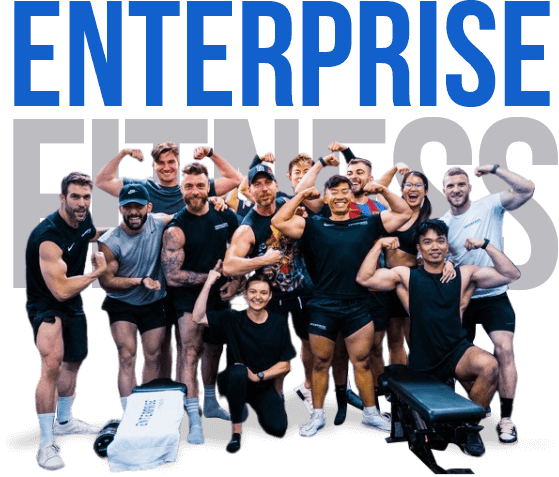This guy is strong! In fact he’s the strength coach of the Worlds Strongest Man – Thor Bjornsson and crowned Australia’s strongest 110kg man!
This interview is a riot. So much great information about the world of strength and conditioning packed into this one. Enjoy.
Listen to this Strong Episode on iTunes or Soundcloud:
The transcription below has been preppared by Rev.
Mark Ottobre: Welcome to the show that entertains and educates. Welcome to Wolf’s Den, my name is Mark Ottobre and today’s guest is possibly the strongest man in Australia. Well, at least he’s the strongest 110 kilo-er, lifting a total of 940 kilos. Please welcome to the show Australian Strength Coach, Sebastian Oreb.
Mark Ottobre: Pleasure to have you on.
Sebastian Oreb: Thank you so much, pleasure to be here.
Mark Ottobre: So, Sebastian, I probably want to start with this, you said something that was very key. You said you don’t like lifting heavy weights, you like making heavy weights feel light. Can you please explain this face?
Sebastian Oreb: That is a horrible face, but I’m sure all of you are familiar with it as much as I am. But yeah, I like it, thanks for getting that.
Mark Ottobre: You’re welcome.
Sebastian Oreb: Okay, so this is competition day and what I do to prepare for this day is very different from this.
Sebastian Oreb: Oh, they’ve all got the faces! This is amazing. This is amazing. We’re going to get a group shot, we know that.
Mark Ottobre: Absolutely, absolutely.
Sebastian Oreb: Very nice. I don’t need to hold that face.
Mark Ottobre: No, we don’t need to but we’ll put it up when we need it.
Sebastian Oreb: So, it’s an interesting thing, I mean the way that I train today is very different to how I started off, I won’t even say in the industry, I wasn’t in the industry when I started training. I was a 63 kilo guy trying to impress my girlfriend, who’s now my wife.
Sebastian Oreb: To be honest with you, you know that our first date was on the beach and I was embarrassed to take my tee shirt off. And she kind of said to me in a really nice way, “You know, I’d probably prefer it if you trained, I reckon you should try it” I thought, okay, I know what you’re saying.
Sebastian Oreb: And I actually became a fanatic from then, and I did all the hard work and the “no pain, no gain” approach, and I was a fanatic and I built a lot of muscle mass in a very short time. And I got to a great result, fulfilled my goal of keeping her as a girlfriend, needless to say.
Sebastian Oreb: But then from then, everything has changed and I don’t actually-don’t misinterpret what I’m saying-I don’t train for aesthetics, I don’t train for health, I don’t train for function, I train for a sport now and as a result I get a lot of those benefits. And that’s what I try and teach right now. To be the best in my sport it’s actually counter-productive to grind out every session, you know, to make that face every time you get under the bar, and go to fail, and do a lot of these things that are just too strenuous.
Sebastian Oreb: A lot of the things I like to compare myself to-Tiger Woods, why is he a great golfer? Does he smash the shit out of the ball every single time he touches that ball? Floyd Mayweather, best boxer in the world, love him or hate him, he has a game plan when he trains. He doesn’t just go for a big overhand right knock-out punch every single time he throws a punch. Yet, people come into the gym and that’s how they feel they should be training. No pain, no gain, go to fail every set, grind out otherwise you’re just not working hard enough. Well, it’s taken me many-actually, probably about ten years of making mistakes in the gym to realize that’s not the best way of doing it.
Mark Ottobre: So, let’s go into that metamorphosis right, so you were 63 kilos, how old were you when you were 63 kilos?
Sebastian Oreb: I met my wife 17 years ago, I was 20 years old.
Mark Ottobre: Okay.
Sebastian Oreb: So I’m 37 now. So it’s getting old now, you can round me up to 40 now so I’m going to own that one. But, yeah, 63 kilos, I’m now a hundred and-I compete in the 110 kilo class, and I’m the same height as I was back then. So I was quite skinny.
Mark Ottobre: So, how much would you weigh, say today? Are you eating up or eating down?
Sebastian Oreb: Right now I’m about 103 kilograms, to be honest with you, the weight that you guys have seen, the face there, that’s a 110 kilogram head, that’s me-I eat up to my competition because actually I’m not hugely comfortable working out at that body weight all year round. So right now if I stepped on the scales I’d be about 103-104 kilograms, and I’m kind of comfortable there.
Mark Ottobre: Because it’s quite a profound statement, that’s why I kind of wanted to start and launch into this first up, because I know for me myself and plenty of people watching this on YouTube or listening to it on iTunes and everyone in the audience, they’ve certainly been there. Most people would be like “I’ve got to grind it out, I’ve got to lift it, I’ve got to get this and if it’s not hard I’m not really working” And it’s been more recently I’ve been working with, I’m not sure if you know Gus Cooke, he’s watching this from Lifters League and a lot of the stuff has been really easy but then a lot of my lifts, it’s coming up better, my techniques better, the weights that used to be hard are now flying up, I feel a lot better.
Mark Ottobre: And when you said that, there was a thing of “Oh shit, this is actually why”, So how did you … What was the pivotal moment where you realized? Was it a mentor, was it a power lifter who said “Hey man, you’ve got to stop going to to broke”.
Sebastian Oreb: It was … A lot of the things I do come from experience, so I spent a lot of time under the barbell and I’m lucky enough to have been in a position where I have people working at my company, working at my business. So, my day will usually entail working up at the gym, having my breakfast brought to me, eat my food, go train at my leisure, and the only reason I stop training is because I’m hungry at that point. And at that time, I have someone bring out my next meal, and then if I haven’t finished my first session I’ll do my next session after that.
Sebastian Oreb: So, a lot of the things that I’ve learned in my life absolutely come from education but mainly come from experience. So, I guess the experience that I had was injuries that stopped me from being able to progress, and the only way that I was absolutely able to train was to not train as hard. Because if I tried to train hard, everything would hurt. So, using that approach I started realizing I was actually rehabilitating my injuries and I was starting to move better and I was stronger than I ever was before and as a result of lifting heavy weights I was building more muscle, as a result of having more muscle mass I had a better metabolic rate and I was actually getting leaner.
Mark Ottobre: What year was this?
Sebastian Oreb: This was probably when my daughter was born, so she’s eight years old. That’s when I kind of snapped out of it and I realized that I kind of wanted to be good at something. For those of you who have heard me speak before, this is my interim job. I was told that there’s no money in the fitness injury, so a best friend of mine while I was trying to find my real job and I’m still trying to find my real job, he told me come and do your courses and be a PT with me up until you get your dream job. And I thought “Okay, I’ve got nothing else better to do, so why not just do that”
Sebastian Oreb: So anyhow, I realized after about-I’ve been in the industry for 15 years so the last 8 years of that is when I started muckling down. But before that I was realizing-and you guys probably know the same-that the hourly rate is probably a lot higher than what a lot of people come out of university degrees with, in the offices, the important jobs and the important people and I’ve got to wear tee shirts and sneakers, you know, exactly what I’m wearing now. And I thought “Maybe this is a pretty cool job” and what’s going to happen to me if I get really good at this job, I don’t know, let’s just see.
Sebastian Oreb: So when I had my daughter, I got married and my wife comes from-and so do I as well, my mom raised us and my wife’s parents, very successful families that have work ethic in the blood. And so for my in-laws to look at me, I wanted respect and I had to earn that respect by showing that I was fit to marry their daughter. Okay, so I wanted to be good at what I did. So that was the point-when I had that child, when I got married-that was the point where I kind of took everything really really seriously and that’s how I guess I became a fanatic with everything I’m doing.
Sebastian Oreb: But going back to the original question, how did you figure out the grinding away? You prefer to lift light weights, so make heavy weights feel light. Yeah, it’s just your injuries and not being able to lift the heavy weights. And as a consequence, I’m lifting heavy weights.
Mark Ottobre: So was there a significant injury that prompted you to go “Alright, this way doesn’t work”?
Sebastian Oreb: It’s a small injury, but it was enough to be debilitating enough to not allow me to train the way I wanted to train. So, basically, I don’t know how good you guys are with anatomy, it was called a greater trochanter bursitis, bilaterally. So, basically you’ve got your femur, this bone that sits on the side of your femur that’s your greater trochanter, over the top of that sits a soft sac, it’s called a bursa. When that gets inflamed it’s very painful. So it’s the only time I’ve ever had any type of MRI or assessment from a doctor. I don’t go to doctors because I don’t want to know what’s wrong with me, but this time it was actually debilitatingly painful, it hurt me to walk up stairs. That was the quadriceps pain that I was experiencing, and if it hurts to walk up stairs you definitely can’t squat and that was my problem, I couldn’t squat and I wanted to be good at squatting because I quite value that exercise.
Sebastian Oreb: So that took me off squatting for a year, and every time I came back to try and train I’d always try and train heavy again because if it wasn’t heavy it wasn’t training. And the only way that I was able to train was when I just went through the motions and just did the movements and didn’t lift the heavy weight and then I was actually able to move without pain for the first time.
Mark Ottobre: So that’s your experience, and then how did you go “Alright, that’s the idea, I’m going to train easier” I mean and then you, okay walk me through the process. Did you stumble across it and go “Alright, I’m going to train at a 60 RN or at 60%” and then going from that or your personal experience to “Hey, wait a minute, I’m gonna try it with my client” because that’s also a leap too. To go, “Okay this is working for me” now I’m going to apply it to my client who’s, say average, and then the leap to “I’m going to apply this exact methodology to a world-class athlete” so can you walk me through that?
Sebastian Oreb: So, I’ve been lucky enough to … I just posted it this morning actually, Ernie Lilliebridge Sr., four years ago I met him, four years ago today, I met him, he’s the father of Eric Lilliebridge, arguably the strongest power lifting family in the world. And it was fitting that I saw that photo, he posted it just as a reminder on Facebook, you know those ones, how they pop up?
Sebastian Oreb: And I thought, wow this is really fitting because this is a huge part of my progress as a coach and as an athlete was the day that I met these guys. What they changed for me, they had such a huge emphasis, these are the best guys in the world, and I saw how they trained. And the father was such a caring coach, I took so much from that guy, so many valuable lessons. Not just academically …
Mark Ottobre: Could I just backtrack, so did they come out to Australia? Did you go to private internship with them? How did you cross paths?
Sebastian Oreb: Yeah, they came to Australia. There was a world championship, I was the president-sorry, not the president, the state representative for a power lifting federation, it was called CAPO and I was new the New South Wales representative and I was close to the Australian president. And he asked me if I could sponsor one of the athletes, and I could do seminars with them and I had to host them and look after them and various other coaches around Sidney would do the same to go get all the other various athletes.
Sebastian Oreb: And he recommended that I paired up with Eric Lilliebridge, so it was kind of by accident that we formed such a great relationship, because his dad wasn’t meant to come with him either, but that’s who I kind of sat in the front seat of the car with whenever we drove around and that’s who I was speaking to mainly, was actually his dad. Eric was in the back seat with his girlfriend, kind of smooching in the back the whole time.
Sebastian Oreb: But that’s how I met them, I brought them out so that he could compete in the world championships in Sidney, in 2014, and since then I’ve had such a great relationship. We’ve had a business relationship as well, we help each other, he’s coached me at power lifting competitions. He’s helped me tremendously in so many ways, but one thing that I saw about him was his emphasis on lifting technique and never going to failure. He had his son performing amazing lifts for an audience like this. So a lot of the time I-I used to-I’ve been an educator for a while as well, and I used to have a lot of my fantastic lifters kind of as a side show performing a max squat.
Sebastian Oreb: I don’t know if you guys are familiar with my wife and her sister, she’s got a sister called Dinny Jay, 50 kilo girl who can squat 140 kilograms. So whenever we’re demonstrating the squat it’s like, “Okay this is a little girl half your size squatting more than you, pay attention please.”
Sebastian Oreb: And it really stood out to a lot of people and it was very successful and it was a great way of getting a message across. And Ernie, when he brought Eric out, did the same thing but except with a guy that was lifting 480 kilograms on a squat. So, completely different level, literally the best in the world. And one day, for example, we did a deadlift seminar and he was scheduled to deadlift 400 kilograms for the crowd because … I’ll just do a round of hands, how many people have seen anyone live pick up 400 kilograms from the ground? Hand right up.
Sebastian Oreb: We’ve got one hand, usually I’ll get zero hands. Who was that?
Speaker 3: [inaudible 00:12:47]
Sebastian Oreb: Right.
Mark Ottobre: It was at your seminar.
Sebastian Oreb: Right.
Sebastian Oreb: So it’s something that doesn’t quite happen quite often, right? And Eric was looking phenomenal, he’s the best lifter in the world and I’m sure he would have smoked it, but he got to his last warm up at 360 kilograms and he threw it up, like I don’t know how fast you’d expect to see 360 kilograms move, but it moved fast. And for his dad, he wasn’t satisfied, he said we’re going to stop it right here, he’s not going to move 400 kilograms safely, there’s a risk because he’s not performing.
Sebastian Oreb: I was like “Hey, he’s performing alright” but not at the level, he wants everything to be-the analogy we use is a swish in basketball. No grind. That’s not how you get stronger, that’s how we increase the risk of injury. And I saw that level of care that he, it wasn’t just that he stopped him at 400 kilograms, it was the whole process of how he warmed him up, the attention to detail, so much care that he had for his athlete which was his son, that just-it stood out so clearly to me … Wow, this is why these guys are the best. Academics, yeah, he’s great, he’s got a lot of experience and he’s a really intelligent guy, but that’s not where it was at. That’s not why Eric is the best in the world. It was the care and the attention to detail that made him as good as what he is today.
Sebastian Oreb: So, you know, it’s kind of like hanging out with guys that are the best in the world. And it’s not just Eric and Ernie Lilliebridge. Something that I know after I got in with the cool crew, so these are the strongest guys in the world, started speaking to other guys in the cool crew. So, other world record holders in different countries in different disciplines and started realizing that every single person at that level trains the same. No one trains to fail, no one grinds out in their sessions. If you see someone missing a lift, it’s just wrong.
Sebastian Oreb: You know, you guys had Andrew Lock in here not too long ago, he told me a funny story. At his gym he trains with one of the best bench pressers Australia has ever seen.
Mark Ottobre: [Ange Colatti 00:14:42].
Sebastian Oreb: Ange Colatti.
Mark Ottobre: Yeah, yeah, yeah.
Sebastian Oreb: And Andrew was telling me, he said “last week, someone missed a lift”, Ange walks out, he said “You’re a dickhead” and just walked off.
Sebastian Oreb: And I just thought “That is just brilliant”
Mark Ottobre: Yeah.
Sebastian Oreb: And it’s a hard thing to say to people, especially novice lifters because to be completely honest with you, we’ve bent the rules a little bit with novice lifters. A lot of people don’t know their potential at that point. So you have to kind of push them, within reason, but it takes time to be able to see that.
Mark Ottobre: So, let’s just say, you know, there’s a lot of coaches here in the room, okay? They want to get to that level, they want to be like Sebastian, they want to be like the Lilliebridge family, right?
Mark Ottobre: What are you looking for at that level of breakdown? What things, what cues, are there some takeaways that you could give?
Sebastian Oreb: It’s a lot of attention to detail with how the body moves. When you know how the body moves, you’ll see the breakdown. A lot of the times it comes from bar speed, it’s like when you see a basket ball hit a swish, you hear it just go … And that’s the sound that it makes when it hits nothing but net. And it’s the same thing with how the body moves. It’s a sweet spot.
Sebastian Oreb: The analogy I use is a basketball. If I’m walking down the street bouncing a basketball, you don’t know how many meters per second that basketball is moving. But you’d be able to tell very quickly if there’s not enough air in that ball by the way it’s bouncing. That’s how the body moves and that’s how it should move under all of these loads. Controlled, tight, bang. It should hit a sweet spot and, kind of, the body will bounce as close to a basketball analogy I can find. But that’s how the body moves. And at that level, you start to recognize those things. Every lifter moves at a different speed as well, so it’s a matter of knowing your lifter. Some people hit a sweet spot and it’s still a slow move, but you learn these things very quickly.
Mark Ottobre: Do you have any lifters where, cause I know sometimes this happens a lot with my training, is my first set won’t look that great, my second set won’t look that great, my third set, boom. Do you take any of that into consideration, of lifters, I suppose, neurally waking up in terms of their sets?
Sebastian Oreb: Absolutely, and this is, I guess this is part of, I know you’re going to ask me because everyone does, what is your strength system?
Sebastian Oreb: That is part of my strength system. If I saw an athlete like that, I would teach them to be a little bit different to that. So I guess this is another take home point that I got from the Lilliebridge method. They talk about, in a session of Eric Lilliebridge or his dad or any of their athletes, they’ll work you up to one rep max. And that’s it, and then they’ll do it.
Sebastian Oreb: So if it’s a squat session you’ll work up to a heavy single squat and then you’ll do back down work on dead lifts and light stuff and body building stuff, stuff that makes you feel good. But it’s teaching the body the skill of lifting the heaviest weight possible for one rep. Not doing set after set. So, his theory, which is absolutely completely valid and he’s validated that many times, is that, you know, if you’re doing five sets of something, you’re teaching yourself to hold back so that you have enough energy for five sets. And that’s something that I’ve seen with a lot of fantastic athletes, and great lifters in the gym. They’re performing things like five sets of something, and then they’ll move on to the next exercise and they’ll do another five sets.
Sebastian Oreb: And they’ve conditioned their body to be able to not spend everything at once and to be able to last until the end of the session. In a sport like power lifting, that’s useless. You need to teach yourself how to give everything right now. So if you’re an athlete of mine, in my opinion there’s a few different things that I could do to make you have your first set as your best set of the day, and that’s what I’ll be working towards if I was to train you.
Mark Ottobre: So, with say there the Lilliebridge method, that’s not your method though in terms of, you don’t prescribe to the …
Sebastian Oreb: No, absolutely not, their method is very different. So, for example, their base method is training three times per week and actually leading up to the biggest power lifting competition in the world I saw Eric say that he only trained two times per week for this. So they’re all about, you know, these guys are lifting heavy weights, heavier than I can imagine, heavier than I can touch, and therefore it needs more recovery. So, for these guys, if you-general population followed, you know, two times a week of training, you’re going to get a very minimal result if any at all.
Sebastian Oreb: The reason why they’re able to progress with that methodology is that they are so strong and they need that much recovery. So, people talk about total tonnage of a set. A lot of people … Everyone has different types of loading parameters and how they like to progress with their programming from week to week and that is a term that I see thrown around a lot, is total tonnage. These guys’ total tonnage in one rep is more than most people do in a whole set or in a whole work out, you know? So, it’s like they need the exact same amount of recover from that one single as people do from a whole week of training. Because they’re able to work to that level and push their nervous systems as high as it goes, to maximum.
Mark Ottobre: So I know the Lilliebridge family really helped you improve your squat, you were saying by a hundred kilos, and that really helped you …
Sebastian Oreb: Yes, 172 and a half.
Mark Ottobre: Yeah, amazing. And they really helped you out in a lot of ways with your power lifting, but I’m really curious as to why, do your personal training not, say your clients, as to why, what was the deciding factor for you not to model all of your training the way they train.
Sebastian Oreb: Exactly that, I’m not as strong as Eric.
Mark Ottobre: Okay.
Sebastian Oreb: So if he does a set and, you know, depending on your level of strength, a lot of people- the common question that’s asked is how much rest do you need after various lifts.
Sebastian Oreb: So I was saying, Charles Poliquin for example, he wrote an article of the idea of frequency for each lift based on how demanding it is and how much recovery is required. So he wrote somewhere in there that the deadlift for a good deadlift session you need about, I think it was roughly around 10 days of recovery from deadlift session to deadlift session, if it was a good enough deadlift session.
Sebastian Oreb: Not saying that he is completely wrong, but I find that not everyone is lifting at that level where they deserve to have 10 days of recovery, and some people are even stronger. So for example, I train a guy that’s stronger than Eric now, and that’s the guy who is currently number one in the world, his name’s Hafpór Júlíus Björnsson, he’s the World’s Strongest Man, and for his deadlift session he need 14 days of recovery. His whole programming is a D-load every second week, so he does heavy week, light week, heavy week, light week, because he’s too strong to work at that level week after week. His body just won’t handle it.
Sebastian Oreb: So, I forget what was the question, I get sidetracked.
Mark Ottobre: So, you … That’s okay, it’s good. The Lilliebridge family have had a massive impact on you, and their philosophy, I suppose, is not, I suppose, antithesis to yours, but it is very different in the sense that they’re building up guys to a one rep max and then saying go home. Now, obviously not everyone’s at that level, but I figured you’re at that level, you’re at least approaching that level, so is their philosophy on training something that you are going to implement in the future when you get strong enough? Or is it …
Sebastian Oreb: Absolutely. Definitely, I think it’s a brilliant method and it’s something that if I was strong enough I would benefit from it greatly, but I just don’t believe that I’m strong enough to need a 14 day recovery from one of my lifts.
Mark Ottobre: What’s strong enough?
Sebastian Oreb: Well, these guys are 480 kilo squatters, I’m a 370 kilogram squatter. So, for me it took me-I won’t even compare myself to them-so you guys would know the difference, that’s close to 500 kilograms. There’s not many people-there’s 6 men on the planet that have ever squatted 480 kilograms and plus.
Mark Ottobre: So, say someone like Eric, right, in the average session with Eric, would he be going to, say, 450 every session in terms of squats …
Sebastian Oreb: No, no, interestingly, a lot of people think, I see the term warm up with your max and all the loose things. It’s fair to say for a lot of people, yeah, but I don’t coach Eric so I won’t use him for an example, but Thor, for example, he’ll lift heavier than Eric, actually. His deadlift sessions, he’s over 400 kilograms, he reps out 400 kilograms.
Sebastian Oreb: And he … What was the question again?
Mark Ottobre: It’s okay.
Sebastian Oreb: I’ve just got so many things that are happening at once.
Mark Ottobre: Yeah, it’s alright. No, we’re bouncing around a bit and in this interview and we’re going to come back to a lot of things and that’s completely fine. So, where we can go to now, because obviously you are the strength coach of the Worlds Strongest Man, for those who don’t know, which is Thor Björnsson, and with training someone like that, what does that do for your psychology?
Sebastian Oreb: Now I remember what the original question was, and I will go back to it.
Mark Ottobre: Okay.
Sebastian Oreb: It teaches me a lot about human potential and it teaches me a lot about something that I say when I get a class of people and we’re learning how to lift, I qualify the class and I say “Alright, right now, I’ve seen someone lift 500 kilograms, 520 kilograms off the ground. Trust me your shit’s not going to impress me. My shit doesn’t impress me. Okay, so don’t try and do that”
Sebastian Oreb: And that’s the approach that I used to take, you see a new crew of people, you’ve got to try and impress them and lift as heavy as you can and all those things. And I use that to teach people to back off. You’re not Thor Björnsson, and you’re never going to be. The guy is twice the size of you, stop trying to push yourself to these levels. And after seeing what is humanly possible and how he reaches those goals, it allows me to realize how many people are doing it wrong.
Sebastian Oreb: So this was the original question, warming up with your max, Thor Björnsson, majority of the year, lifts weights lighter than what I lift, okay? It’s only when he peaks. So that was the question that you asked, was Eric Lilliebridge, does he try and get to 400 kilograms every session? No he doesn’t, the body doesn’t like that. You’re beating yourself up a lot and you’re loading your spine a lot, and you’re beating your nervous system up a lot. The body needs rest.
Sebastian Oreb: So that’s what I said, I don’t train Eric, I don’t know his program exactly. I know Thor Björnsson program exactly and a lot of the times when he starts with his deadlift programming he’ll be on 240 kilograms for his first deadlift session. Today he’s got a deadlift of 420 kilograms, so to get to 420 kilograms he doesn’t deadlift 400 kilograms every session. It’s a linear progression. It takes time, you’ve got to build the base and if he beats himself up like that every week, every year, there will be a shelf life and it will be expired very shortly.
Mark Ottobre: So, onto Thor for example, how did you come up with these training methodologies, or how did you formulate your philosophies in the sense that you discovered something new for yourself, it’s okay, the heavyweight thing is not working for me, it’s busting me up. You go lighter, you realize okay, there’s progress in this, this is feeling good. I mean, at that point where things are feeling good, I know personally a lot of people inclination is to go alright, let’s go, start going heavy now.
Mark Ottobre: So you fought through that, you start lifting heavy and you know it’s onto something, and then it almost seems that you’ve developed some-I’m not going to say unique, but it kind of is unique-principals in the sense that, let’s be real, you train 1% of the world or even less, 0.1% of the strongest guys in the world. So at that level, you’re creating systems and then the unique thing about you, and this is what I see, the unique thing about you is you look back from, this is legitimately the best in the world and this is 0.01% of people and most people just aren’t born the way Thor was born and they’ll never be at that level no matter how hard they try and that’s just not-you can say it’s not fair but that’s just the way the cookie crumbles, right? He’s just a genetic superior in every single way.
Mark Ottobre: So you’ve gone to that level, you’ve looked back, and you go but there was a point where you weren’t at that level, so how did you formulate these ideas and then you get to the point where you’re training Thor, and now looking back going “Alright, here are the philosophies that we should follow to get strong”.
Sebastian Oreb: So, I’ve been fortunate enough to be in a position where I’ve met some pretty cool people around the world. And I’ll introduce a new name that you may have heard of, his name is Alex Simon and his nickname is “The God”. I met him when I was at Fitness First, so this is well before I opened my own gym, I used to work at Fitness First for the first 10 years of my career. And my brother, I was working with him, he said “Dude, you’ve got to see this guy, he’s an 18 year old kid and he weighs 130 kilograms, he’s a freak” and I thought “I’ve got to see this guy, that’s bullshit. 130 kilograms, that’s a freak show” And so I met Alex and yeah, he was a freak. He wasn’t muscular in any way, he was just a big dude. He didn’t train, he just had thick ankles, his feet-people described his feet, you know how you say “His foot’s this big” they’d say “His foot’s this big”. And he’s a really unique guy, he is huge.
Sebastian Oreb: And it’s like, I don’t know what it but I’ve got to help this guy in some way. Whatever he’s doing, I want to be there and watch it because he’s a freak. So I worked with him from when he was squatting-you know this is a silly thing, but the first time he stepped in the gym he was able to squat over 200 kilograms, he was able to bench press 50 kilo dumbbells the first time he touched weights, for 20 reps. It’s ridiculous, that is a genetic freak also.
Sebastian Oreb: So he dead lifted 300 kilograms in my gym he dead lift. Actually, I took him from a 220 kilogram deadlift, he couldn’t pick it up off the ground and that’s why he liked me, because he had his coach that was telling him “Okay, do this, do that” and he’d try and do it and he wouldn’t get 220 kilograms off the ground. And then he came to me and he said “What am I doing wrong?” And I just-not the approach that I take now, but I told him he’s being a little fucking bitch. I said “Look at the size of you. Dude, I can fucking smoke that weight, are you serious. Go and pick it up man”and he did 10 reps of it.
Mark Ottobre: That was the first?
Sebastian Oreb: That was the first, before he had ever trained before. He was just … You know, to pick up 220 kilograms deadlift for 10 reps, never trained, he’s a freak. I took him from there to number one in Australia. Through all of the people that I’ve met, through all my education, through training myself, through beating myself up, we did all of the mistakes with him as well, but he knew no better. And at that point he was almost my guinea pig and he was lucky that I was my guinea pig before him, but he was my guinea pig for the big guys. Different principles apply when you’re lifting heavier weights.
Sebastian Oreb: So it’s like the Lilliebridge method, I can’t follow that completely because I’m not strong enough to deserve to only train two times per week. So, I was able to use guys like Alex Simon and my experience working with Eric Lilliebridge to come to Thor and say “I know what to do with you, man” especially-this is getting a little bit sidetracked- but the story of how I met Thor, I was able to bench press the same amount as him, which is a huge reason for my success as a coach as well, is because I lift so well, a lot of the big guys they look at me and they listen to me because they know I know what I’m talking about.
Mark Ottobre: So on that, I would assume and I think it’s a correct assumption that you put everything into your training, right?
Sebastian Oreb: Yes.
Mark Ottobre: So how does being around someone like Thor, meeting Alex Simon, how does it not demoralize you at the same time? It’s like, “Dude, I’ve worked my whole life to get as strong as you and this is-you’re picking up the weight that I’ve trained my ass off, and you’re just picking it up like that and making fun of it with 10 reps, and this is my max” so how does it psychologically sit?
Sebastian Oreb: So, I want to be the best, let’s get this clear. I love, I am so competitive, but at the same time I have coached so many of my competitors and given them the exact same everything, training models, everything and helped them with more care than I’ve given myself. I want to be the best against the best, I don’t want to just be the best and hide things from people and say “I’ve got this secret and I’m going to beat you because of that”. If I’m the best, I want to genuinely know I’m the best.
Sebastian Oreb: And I’ve coached so many people to-I was here, they were here, and I’ve coached them to be here many times. And actually the feeling that I get from doing that is actually better than me just taking myself there. To know-that’s my career-and to know, I get such an amazing feeling to know that I’ve succeeded with other people, it makes me think that I’m good at my job. Which is of really high importance to me. And so, yeah, I had to detach myself from all of that a long, long, long time ago and now I tell all of these guys “You know how many guys I’ve gotten to be stronger than me? There’s your goal”
Sebastian Oreb: And they look at that and they realize that there’s no competition between us, we’re all working together and yeah, I’m probably, like I said, for once, I’m the big guy in the room, you know? Like I’d tip your table and I’m going to take that, man, you know? But everyone I hang out with, as I said, he was 130 kilograms the first time I met him, he got to 180 kilograms. These guys are freaks, you know, Thor Björnsson …
Mark Ottobre: Who got to a hundred … Alex?
Sebastian Oreb: The God, Simon. Yeah, when he became, you know, so this was five years after I met him. We took him to number one in Australia, of all time.
Mark Ottobre: Just to quantify for the podcast and the interview, number one in Australia in what, exactly?
Sebastian Oreb: In power lifting competition, so he totaled the number one, who reclaimed his title, so it’s a guy called Odell Manuel, he’s an absolute legend, he’s a technician, he’s a strong guy, he’s a nice guy, everything you want from a champion, that’s Odell Manuel.
Sebastian Oreb: And Alex Simon, in his second power lifting competition ever, he got 1077, and a half kilograms to be number one in Australia, all time, no one in Australia has ever done that. He did that in his second competition. He then moved on, he retired from power lifting after that, he didn’t like it. Which is crazy because it’s like damn, you know, if I was good at something I’d want to keep doing it, you know, he could have been the best in the world within 12 months after that. And a lot of people will hear me say that and go “Oh”. He could have been the best in the world if he continued for 12 months after that, the guy is a freak. That guy has the same gift that Thor does, but just on a different level.
Mark Ottobre: So could I just get into the psychology of that, right? You’ve got a guy who, I mean, you’re obviously passionate about lifting, you’re passionate about power lifting and you’re also passionate about seeing people succeed. I think that’s part of the measure of why you’re such a successful coach. So you have a guy who you know, geeze, you can be number one in the world in 12 months and he says to you “Nah, bro, I don’t want to do this” how do you-are you going “Look man, you’ve got to do this, you can be great, you can go down in history” or are you going, “Look, I respect your opinion” or how does that work?
Sebastian Oreb: It’s a lot of both and the thing is, there’s a lot of reasons that you have to understand that comes with being the best in the world. So 180 kilograms is, for me, remember what I said, I don’t like being 110 kilograms because it’s uncomfortable. Alex Simon, leading up to his competition wouldn’t sleep a single minute because he was too big. If anyone knows anyone that’s huge, they have a cpap device, they cannot sleep, okay? They suffer from sleep apnea, alright? And they don’t have to be 180 kilos to do that. He was petrified to doze off because he’d close off his air supply and choke and not wake up. He would sleep sitting up in his chair, that’s the only place that he would be able to get some type of comfort. And that’s not a life that he wanted.
Sebastian Oreb: So, for me, I was pushing him up until-that’s the argument that I was having with him. To become number one in Australia, like “You’re there man, keep on going” kind of thing, and then once he achieved it, it’s just like “I’m just not doing it anymore” and there’s a few things about trying to tell a 180 kilo dude what to do, especially with an MMA background. You know, he’s got a fighting record of five professional MMA fights, he won them all by knockout in the first 30 seconds of the fight. He touches them and they go to sleep, literally.
Mark Ottobre: How much does he weigh now?
Sebastian Oreb: He’s about, between 150-160 kilograms.
Mark Ottobre: So still monster.
Sebastian Oreb: He’s trying to cut weight. He’s just, I don’t know what’s going to happen, but the guy is just naturally massive. It’s ridiculous, he stopped touching weights as well, he had to stop doing weights because he wanted his muscles to shrink, he needed to shrink, his goal was to be in the UFC, the heaviest weight class in the UFC is 120 kilograms. So he had 180 to 120, he had 60 kilos to lose. So, yeah, that’s what he did, he quit weights all together and dieted and struggled, got to 150 kilograms. With a big, big, big struggle.
Mark Ottobre: That’s amazing insight into the life of a big man. Absolutely amazing. So here’s a different question but I find it fascinating, in terms of what have you learned about strength from going from Thor … So, from Thor’s perspective, looking back on the general pop, I won’t even say general pop, let’s say a lifter like myself, you know. Fairly good, but not at an elite level. So what lessons have you learned from that and what lessons have you learned from someone who you’re say coaching a general athlete up to say Thor’s lessons. Are there inverse principals? Are there things that still apply? Are they just totally two different beasts and you’ve got to treat them as such?
Sebastian Oreb: Yeah, so, no, everyone is the same and that is we just go in and we work til the body can move perfectly and if it stops moving perfectly, that’s when we stop. Something that I’ve loved about working with guys so strong is I don’t care about the number anymore. You’re speaking a different language, I do not understand when you put 400 kilograms on a bar how a human being can do that, but they just can. So now, the plates on the side, a lot of people get intimidated by it, for me, I don’t look at that anymore, I don’t care what number it is. You could say 240, you could say 340, it would make no difference with how I approached you.
Sebastian Oreb: We work until your move … So, if, the number is irrelevant, how we get there is what matters. So, I’ve got a principal and that is you need to earn the right to add weight to the bar. So let’s just say your deadlift was 400 kilograms, if you’re not moving 200 kilograms well you’re not allowed to put the next plate on. You’ve got to do that right before you can put more weight on the bar.
Sebastian Oreb: And I’ve had people, you know, I’ve coached other people, not just power lifters and strongman, I’ve trained a lot of the high level rugby players as well, NRL. In particular, I’ll tell you a story about one of the guys who is considered the strongest NRL player in the country, his name is Marty Taupau, if anyone’s ever heard of him. He came to me the first time I saw him, he was like, he had the same quality that Alex “The God” Simon had, his feet are this big, his ankles are like that and his knees are like that. And it’s not like cankles, it’s dense bone with muscles on top of them. And it’s just like “You’re a god, dude”
Sebastian Oreb: And I said to him, he also walks in his knuckles are touching the ground, he’s just huge. And I said to him “You know, so we’re dead lifting, great lift, what’s your deadlift?” And he said 220. And I said “That’s wrong, that’s just wrong, 220 for a guy your size, that’s just bullshit.”
Sebastian Oreb: First session, this is on YouTube if you guys want to validate it, I document everything that I do, you know. First session, he did doubles on 260 kilograms. So, I don’t give a shit about his number, that number was wrong. A lot of times when people say their numbers, as well it’s like “Okay, that’s the number that you did with your rules and your warmup and your technique and all that stuff.” It’s good to know in the back of my head, but now we’re doing something completely different. That could be too high, that number could be way too much for you, you know? But in most cases I find the opposite, so you’re better than that, just trust me.
Sebastian Oreb: And that’s what it has allowed me to see, is let’s stop thinking about the number, let’s warm the body up properly, let’s use perfect technique from the very, very beginning and now let’s see where it gets you. If you start grinding, I stop you. I don’t care what that number is. And if you’re to see me for the first session it is an assessment, every time I see someone for the first time, it is an assessment. That’s how I would assess you. I work you to the point where I see, I don’t even want you to break down, I know it’s about to break down. And then I’ll take a percentage off, I shouldn’t even say a percentage, maybe a plate or 20 kilos or whatever it is. And then that’s where we work, that’s where the magic happens, sub-maximum, you know?
Sebastian Oreb: We use the terms now “RPE” and “RIR” so reps in reserve. The idea behind all of that, you could stick an RIR or a RPE to translate what I’m doing …
Mark Ottobre: Just so this is a complete podcast, could you just define RPE as well?
Sebastian Oreb: So RPE means rate of perceived exertion. Many people use this, some people use it more successfully than others. But the main purpose of using an RPE is basically, what you won’t see when people are using programs with RPE is the number 10. Up here, 10 means you cannot physically do any more. That’s what you’re hoping to achieve on competition day. But anyone who successfully uses RPE will be using hardly even nine RPE, usually eights and sevens throughout the entire training program to get someone strong enough to do a great RPE of ten on comp day. So that’s what RPE means, one being so easy, you’re just like lying down, there’s an RPE one. Ten, you’re physically not possible to lift any more than an RPE of ten.
Sebastian Oreb: Another great way that people use their programming principals without getting a load is RIR, reps in reserve. So with one RIR, that means keep going until you know you have one rep in the tank. Two RIR, that’s two reps in reserve. So you could translate everything I’m doing with an RIR and RPE but I don’t actually use those. Okay, what I do is I work people to, it’s called mechanical fail, and less.
Mark Ottobre: If we could just go into mechanical failure, on the say squat bench press, dead lift, just I suppose an overview so the folks really, kind of get what we’re looking for. You mentioned bar speed before, obviously with a deadlift there’s the whole thing about neutral spine, and you have the elites lifting with more of a rounded back. What are you looking for, let’s start with the deadlift. But when you look at mechanical failure, are you looking at the bar needs to always be close to the shins, or they’re just doing-you see what they lift in their warmups and if it looks different than their warmups you’re quitting the rep? Are there some key things in each lift that it’s …
Mark Ottobre: So, say for example I’m squatting, alright? And I’m at, say, 150, alright? I’m doing five reps, and on the last rep my knee comes in a little bit, are we calling the workout that, or are you telling me to stop being a little bitch?
Sebastian Oreb: No, I don’t ever tell anyone to stop being a little bitch, unless you’re like Simon and you’re just fucking 10 times bigger than everyone else and lifting half what they’re lifting. So, bitch. And then we’ll see that very very-and he did, he’ll see that really, really well and then it’s like I’m-I don’t do the no pain no gain thing. We don’t do that. So I kind of tell everyone to kind of be a little bitch. If something hurts, you tell me immediately and we stop, it means we’re doing something incorrectly.
Sebastian Oreb: So, when you understand the way the body works … I work with arguably one of the best rehabilitation specialists in Australia and you could even say the world, that’s Andrew Lock.
Mark Ottobre: Andrew Lock, yeah, we had him on episode 2.
Sebastian Oreb: Yeah, he’s a really unique guy, really intelligent guy as well. And I work very closely with him. So we’ve got-and I have been for a while now, before that I had a great understanding of rehabilitation. So I do have a great understanding of these things, I’m just not winging it or guessing it, I kind of know where it’s okay to kind of break form a little bit once or twice, not repetitively. And not to go to those points.
Sebastian Oreb: So if you did your whole workout, set of five, and the fifth rep your knee came in a little bit, I could probably just tell you that’s what happened, fix it. And you’d most likely be able to fix it. Okay? So, sometimes people are overthinking things, this is where it’s breaking down because it’s a weakness in the-I don’t know. Just tell the lifter. This is what happened, or my favorite tool is the video. Show the lifter, see this, you’ve got to not do that on the next set and let’s see how we go. And if you continue to do that, that’s when it’s too heavy.
Mark Ottobre: Okay.
Mark Ottobre: So switching gears just, I suppose a tiny bit but still on track, let’s talk about Thor. What’s happening with Game of Thrones?
Sebastian Oreb: You know, the funny thing is, is now I’m such a bad friend, I’ve not seen a single episode.
Mark Ottobre: Oh, wow. So, for those who know, Thor is “The Mountain” in Game of Thrones. Hands up if you watch Game of Thrones.
Speaker 4: [inaudible 00:43:20]
Mark Ottobre: Almost everyone. Amazing TV show, fantastic and he just plays such a great role, amazing role.
Sebastian Oreb: Yeah.
Mark Ottobre: So how did you guys meet?
Sebastian Oreb: So I was training in my gym, we’ve got a gym in north Sidney, base gym, I run it with my wife and her sister. They’ve got a women’s only business and they work alongside with my business and they’re called the Base Body Babes. And when I train, they look after me and they leave me alone and they let me be and they’ll come and interrupt me if it’s something worth interrupting.
Sebastian Oreb: And one day I was bench pressing and Dinny, that’s my little sister-in-law, she walked over to me and she said “Guess what, you just got a phone call from … ” whatever company it was, SodaStream was the company, “and they want to do an event and they’re bringing Hafpór Björnsson to come and train and they want us to train with him” and I said “Get me in that room” Right? Not because I wanted to be his coach, that was well beyond what I thought was possible. I just wanted to hang out with this guy. That’s the strongest-well he wasn’t the strongest guy in the world at that point but he was the biggest strongman, he was a freak, you don’t have to know who he is and you see him and it’s like “I want to see what this guy’s about”.
Sebastian Oreb: So it’s “Get me in this room, Dinny” she said “Okay, done. Let me speak to them” so the way that SodaStream worked was they got industry influencers around Australia. So the Base Body Babes have a social media account where they’ve got over six hundred thousand followers. So they’ve got multiple people with big followings, and they wanted to get them all in a room and have a work out with Hafpór Björnsson, so they all take photos and they all re-share on their Instagram and that’s how they market their product.
Sebastian Oreb: So, Base Body Babes get me in the room with him, great. They said …
Mark Ottobre: Sorry, question. So, at that point-because I know now you’ve got over one hundred thousand Instagram followers-how many at that stage did you have?
Sebastian Oreb: I probably had about fifty thousand.
Mark Ottobre: Okay.
Sebastian Oreb: Yeah.
Sebastian Oreb: So, within Australia for what I did, males, I don’t want to generalize, but my ass isn’t as nice as the girls and maybe that’s what it is, but they have been in the industry for a third of the time that I have, and their following just went [wooshka 00:45:22] because they’re a little bit better looking than me. Maybe that’s what it is, I don’t know what it is.
Sebastian Oreb: But my following for a male power lifter personal trainer, it was okay, you know? Fifty thousand, that’s pretty good, I had a bit of influence, I was able to run a pretty successful business with that much of a following. And, so anyhow, they came back, and they said “Okay, SodaStream want to speak to you” I said “Alright”, so I got on the phone with these guys, and they said “Okay, would you be interested in hosting the event? We’ve just done our research, we’ve realized who you are and what you do.” And I was just like-my wife in the background, she said “Don’t you f-ing dare do this for free. It’s a professional venture, they’re going to pay you to do this” I’m like “Don’t you f-ing dare ruin this opportunity for me”.
Sebastian Oreb: Anyways, she said “Get off the phone, let me do the rest”, so she negotiated, did the professional thing and actually I got paid to run the event with Thor. Not ripping anyone off, I offer pretty good service I think, and we did, we provided a fantastic service and a great product for SodaStream. They came to our gym, it’s like this, it’s our own thing. We shut it off, no one else is allowed. And I spoke Thor’s language. So they went to other coaches that own gyms around Australia-around Sidney-and they offered them “Do you want to run the event”, and they’re like “Shit, I wouldn’t know what to do, where to start, that guy is up here, I don’t know what to do”.
Sebastian Oreb: So anyways, that’s why people said “Sebastian’s your man” and then they came to me, it’s like, I know how to speak his language. They said “He doesn’t speak English very well,” I said “I’ve got a [inaudible 00:46:58] that speaks his language”.
Sebastian Oreb: And anyhow, he came in and, really big guy, just a man of stature. Has anyone ever seen him in real life?
Mark Ottobre: No.
Sebastian Oreb: He’s a freak. And he didn’t have a smile or anything like that, and I just said to him, you know I introduced myself, I said “Let me take you around the gym and let’s discuss what we’re going to do today”.
Sebastian Oreb: So I showed him the exercises, I showed him what I was going to do and all of a sudden he had a smile from ear to ear. And I was speaking his language, you know? Anyhow, halfway through the seminar, one of the exercises that I was demonstrating, which I’m going to do for everyone here today, was the bench press. And my job was to showcase Thor, which was really, really easy to do. So I said to the class, I’m going to ask Thor how much he bench presses, “Thor, what’s your best bench press?” And he said 230 kilograms. I said, “Okay, lets tell you guys what that is. That’s five of these blue plates, each side, plus a 5 kilo on each hand, put your hand up if you can do it.”
Sebastian Oreb: Everyone’s just like “Ah”, and my wife goes “You can”, and I’m just like … Okay, that’s not where I was headed, I didn’t want to do that, but I can. Anyways, so I saw Thor in the background just … This is what I saw. I’m thinking “Aw shit, I didn’t mean to do any of this”, you know. Anyhow, then he said “Sebastian do you mind if I try the technique”, and I was really chuffed, like “Yeah, get in here”.
Sebastian Oreb: Long story short, he bench pressed 235 kilograms for two reps, and then 240 kilograms with this new technique, first time he did it. Alright, it’s like “Okay.” We sat down afterwards, he said “I need you to be my coach”
Mark Ottobre: That’s your sales pitch, right there, hey, done?
Sebastian Oreb: Right. Do you know what I mean. And I was just like … And I just thought “How do I play this” you know, for the first three seconds it was like “Okay, play it cool” just like, “Oh, you know … See if I can make the time, you know? Pretty busy” and then I said, “Cut the shit, man, this is the fucking man”, so I just said “Listen, this is the biggest opportunity in my career that I’ve ever had and probably ever will have, I’ll do what it takes.”
Sebastian Oreb: He said “Will you travel overseas?” I said “Yes Thor, for you 100%” And that was it. So he went home that day, and I didn’t hear fro-I messaged him after that, you know, saying “So glad to meet you” all these things, followed up, and he didn’t reply. Right? And I’m thinking “Too good to be true”.
Sebastian Oreb: Anyway, a month later, he messaged me and he said “I’m going to go to Bangkok to film for Kickboxer, the new movie” you know, the Van Damme movie, they did the remake of it. He said “I’m going to film there, and I’m going to train there for Worlds Strongest Man, before that I’m doing Europe’s Strongest Man, would you be able to come with me?”
Sebastian Oreb: I was like … Yes.
Mark Ottobre: So, that’s an amazing story and also an amazing accomplishment of goal and I dare say more than you thought you’d achieve coming into the industry.
Sebastian Oreb: Yeah.
Mark Ottobre: How has that changed you as a person? Because I feel like it’s almost a story of, “This is what I’ll achieve, I’ll open up my gym, I’ll train a couple clients, win a couple power lifting shows, be pretty elite” and then the reality stretch of “No, no, you’re actually destined for this, son”.
Sebastian Oreb: Yeah.
Mark Ottobre: What has that done for your psyche? Personally, on a personal level.
Sebastian Oreb: It’s so flattering, I’ll tell you right now from a confidence perspective, it’s just amazing. I always think about it and it’s like “I can’t imagine anyone who would have complimented what I do than the strongest man in the world, who’s not only …” Something I heard from Charles Poliquin, people would rather be coached by Björnsson’s trainer than Michael Jordan’s trainer. Okay? That’s just how it is, in the world of money making and all those things, that trainer is seen as better. It’s like, he’s not, or she is not, because this is an athlete, that’s just booty. Not that there’s anything wrong with that.
Sebastian Oreb: But Thor is the best of both worlds. Thor is Hollywood, because of Game of Thrones, he’s one of the most popular dudes around. That’s one of the most popular shows going around, even though I haven’t seen it. And that’s the biggest freak show of a beast ever, it doesn’t get better than this.
Sebastian Oreb: So what’s that done for me? Just so much, in so many ways. And he loves that as well, and he always asks me, you know “Does it help-does it help when I tag you in all those things?” And I don’t bullshit, I don’t sit there and go “Oh, yeah … ” when he tags me, the first time he tagged me it was like, you know, climb up a thousand followers, and then, my social media has climbed up a lot from him. I’m now seen … I’ve been given a fantastic reputation.
Sebastian Oreb: A lot of people-it’s going around, you know? This is the best strength coach in the world because he trains the strongest man in the world. And I didn’t train him when he was the strongest man in the world, he wasn’t the strongest man in the world, and working with him is when he got there. And Thor is, he’s very generous with it but I don’t bullshit him either. I thank him profusely for what he’s done for my reputation and vice versa. We’re just so appreciative of each other and what we’ve done for each other.
Sebastian Oreb: But, I went to a gym in Perth the other day, and there’s a guy there that I know, if he’s watching this, his name is [Janni 00:52:14]. The first time I met him he said to me “You know, I’ve got to be honest with you … ” I’m about to use some bad language here, he said “Before I met you, I thought you were a real cunt, you know?” He goes “But you’re not.” And I’m like “That is the sweetest thing anyone’s ever said to me. Thank you, thank you”.
Sebastian Oreb: And he said “And if anyone says anything different, they’re full of shit” I thought, okay, I don’t know if I want that look where everyone doesn’t think I’m a nice person or whatever. But that’s what I have heard from a lot of people that when they meet me that I’m actually … I don’t know how nice this is, but I’m not one of those “C” word things, I won’t say it, because …
Mark Ottobre: See you next Tuesday.
Sebastian Oreb: See you next Tuesday.
Sebastian Oreb: But I don’t want to be seen as that, you know? I still like to help people, I still like to give back and that’s something that I’ve learned from a lot of my mentors in the past. Someone that we’ve been educated by is Charles Poliquin, and that’s something that he did before. Of course, he has a business of educating people, he’s given so much free information away, and he’s helped so many people without them even knowing it.
Sebastian Oreb: And it’s not just him, it’s a lot of the people that I’ve seen that have impacted me so much. I haven’t actually paid for a lot of that information, and they’re very helpful. And that’s something that I aspire to be. And that’s what I do a lot of if anyone follows me on social media, you’ll see how much free stuff I give away. And it’s because of that, I don’t want to just all of a sudden be one of those people that “You know, okay, I’m training with Thor, you have to pay for my services every time you see me now” I don’t want to be like that, you know? I still want to give back as well and I’ve got a great achievement, it’s a great achievement for me when I see people using my techniques, following my principals, and being better. Because I don’t even know them but they’ve seen something that I’ve taught and they’re a better athlete because of me. That’s an amazing feeling.
Mark Ottobre: It does seem to me that you have reshaped the land mass that is strength in this country, quite considerably. People are posting about the way you squat, the way you bench, the way you do things, it’s changed quite dramatically. I suppose, it’s not how … I suppose the question is how did you do that in the sense, did you expect it was quite an achievement to have that much influence over the whole industry? But it’s become so popular, so was there a thought process on that? Or …
Sebastian Oreb: Exactly that, what I said. Just looking up to the people that I’ve looked up to, why did I look up to them, and it’s because of their willingness to give for nothing in return. And it’s something that I wanted to do, I admired that in these coaches that I look up to, and I’d love to be able to say that I give the same in return. But, to be in a position where people can see me is largely to thank for people like Thor who’s got a huge account that shares my stuff, but also my wife and her business, they’ve got a huge social media account.
Sebastian Oreb: And through working with these guys, it kind of allowed my following to increase and that’s a very big advantage is more people are able to see me, so therefore I’m able to get the message across. I’ll tell you right now, there’s some fantastic coaches around the country that are, I’m not going to say that I’m better than, or they’re better than me. There’s some great coaches around the country that are doing great things, but they just don’t have a following as big, so they’re not able to get their message across. But if … That’s the beauty of social media, if they did have a huge following there’d be more people doing their techniques as well.
Sebastian Oreb: Someone that’s just walked in the room, Eugene Teo, I see so many people tagging exercises that he does because now he’s doing great things, and he does the same thing. Giving away information, giving away free stuff. Asking for nothing in return and I think that’s what makes you a great person or a great coach or a great influence. How much you’re able to help without anything in return.
Mark Ottobre: What I like to say is high tides rise all boats.
Sebastian Oreb: Yes, exactly.
Mark Ottobre: So I think you being successful and showing others what is possible in this industry enables other strength coaches to go “Wow”, it’s almost this animosity between, because you being successful “Aw, fucking Sebastian” but actually really it should be the complete opposite. It’s like, he is successful doing that you love, he’s made it possible for you to do the same, he is the pioneer, he had to shovel way more shit than you’re going to have to shovel because he’s the first guy to do it. And I look at, say, Charles Poliquin who you mentioned before as that guy who was the pioneer for so much of what you and I are able to do today. Whether it’s open up a private gym, he was really the first one who said “Look guys, you can charge whatever you want, you’ve just got to be good, You be good, you can charge what you want.”
Mark Ottobre: So before we head to break, I just want to ask one more question around Thor, and that was the Arnold Classic versus The World’s Strongest Man. Just for the guys who are watching, can you just describe the differences between those competitions? And where I want to go with it is how do you train Thor to win both? Because it’s almost dimetric opposites of how both those comps are.
Sebastian Oreb: Yeah.
Sebastian Oreb: So, just to give a run down of the background of the events. Worlds Strongest Man is a company, it’s a TV show and they coined the name The Worlds Strongest Man. So from a strongman perspective, they want to win that because then the general public sees the winner of that as the Worlds Strongest Man. But amongst the leaders, amongst the people that are in the sport, they’ll see the Arnold as actually event that makes you a stronger person because they’re technically lifting heavier weights in the Arnold’s.
Sebastian Oreb: So the Arnold’s has a lot more exercises where you’re not moving as much, but you’re lifting more. Worlds Strongest Man, it’s more of a lot more endurance, a lot more moving around and running and speed as well and other attributes that are required that are different. So technically, the Arnold’s winner could technically be seen as stronger than the Worlds Strongest Man winner, but if you’re both then there’s no arguing.
Sebastian Oreb: And the beauty of Thor, when I met him, and this is probably why we work so well together. He comes from a background, in Iceland they’ve got a fantastic background of Strongman champions, so that’s Magnús Ver Magnússon, he’s four times Worlds Strongest Man, and Jón Páll Sigmarsson, he was four times Worlds Strongest Man. So they’ve won eight titles before Thor, he’s now made it nine. So it’s huge, that sport is huge in Iceland. And the way that they did it-I believe, I don’t know him too well-but I’ve heard a lot about Magnús Ver Magnússon, I’ve met him a few times and I believe something about him is he mastered the events.
Sebastian Oreb: He was one of the first … So if anyone knows the history, there’s a guy called Bill Casmire, he used to train like a body builder, he was a freak, he had a 300 kilo bench press. And then they trained with barbells and then they go and compete in events they’ve never practiced, and that’s what made him the Worlds Strongest Man. But then Magnús Ver Magnússon changed that. He was training the actual events, so he technically probably couldn’t bench press as much or squat as much or dead lift as much, but he was great at the movements, at the skills.
Sebastian Oreb: So Iceland have a great history, they’re fantastic at these strongman events. So picking up atlas stones, pulling trucks, doing relays with heavy, awkward objects, picking up stones, just really real awkward things. Thor had that, and a 6’9″ frame, so that’s 205 centimeters and he’s currently 197 kilograms, that helps.
Sebastian Oreb: But he didn’t have a huge background in the technical side of the static lifts, which is where I came in. And that’s what I incorporate, that along with my programming principles is what I’ve given Thor. Technique with the barbells and, to put it simply, telling him when to back off, telling him he’s pushing too hard, telling him not to hit the number that he wants to hit.
Sebastian Oreb: Everyone’s different, but for someone like Thor that wants it so bad, it’s easy to go down that path, it’s like “No, this is the world record, that’s what I have to hit today, I need this now”. So, you need this in competition, you don’t need it now. To get there, we have to go back here. And this is how we work so well togethers, so that’s where he was great at moving and events and all of those things and he has one of those bodies that can just do that, he can pull a truck a lot better than you can. I don’t have to explain why, we don’t need a technique, you don’t need a technique, right?
Sebastian Oreb: But when it comes to the barbells and the static lifts, that’s in my opinion, and I’ve proven that so many times, it’s my favorite tool. The barbell is my single favorite tool to strengthen a body, regardless of your goal. That’s all this is, this is just tools to strengthen the body, that’s all it is, right? This is an accessory exercise, everything here is an accessory, whether you’re a fighter, rugby player or a strongman. This doesn’t appear in your sport. So these are all tools, my single favorite tool is the barbell and that’s what I’ve specialized in and that’s what I introduced to Thor.
Sebastian Oreb: With that, we’ve strengthened the shit out of his body. Now, he’s unbeatable.
Mark Ottobre: Awesome. So, with that, my name is Mark Ottobre, you’re watching episode 5 of the Wolf’s Den where we’re with the worlds best strength coach and the strongest 110 kilo-er in Australia, Sebastian Oreb. Make sure, this is a good time to subscribe to us for more great interviews. Episode 4 was with Eugene Teo, episode 1, Tony Doherty, episode 2 with Andrew Lock and episode 3 with Lucky Hatzipantelis, however you say his name.
Mark Ottobre: Make sure you subscribe, subscribe to us on iTunes and stay tuned, we’ll be right back after this quick break.
Mark Ottobre: Hey folks, Mark Ottobre here, owner and founder of Enterprise Fitness and creator of the WolfPack, hope you’re enjoying this super strong episode with Sebastian Oreb, talking about all things strength training.
Mark Ottobre: Hey, for the personal trainers out there we’ve got a special mentoring program, obviously it’s called WolfPack, where we mentor trainers from going from being just a good trainer to being truly great. So you can learn more at www.personaltrainermentoring. The program is structured, so we teach you absolutely everything that you need to be a great trainer. We have over 300 hours of original and exclusive content on our member site, which also includes our special guests content, so we did some private sessions with Sebastian as well as Tony Doherty, Andrew Lock, Bob Gill, etc, etc. over the years, which are stored on the WolfPack member site, which you also get access to when you join WolfPack as well as the four seminars, which happen four times a year and each of them are four days, which do include, also, a mastermind day, which are always very, very special.
Mark Ottobre: We also bring in the best of the best special guest presenters at each seminar for a day, so you get some exclusive time with them. Different topics throughout the year, and again it’s anything from training, nutrition, business, supplementation, we bring in the experts, give you the best information, so you can grow your business from being average to being truly outstanding in the field.
Mark Ottobre: So I hope you enjoy the same success that I’ve had in this industry, this industry has given me a lot, and I hope to pass the fire, the torch forward and help you with yours.
Mark Ottobre: So check it out, www.personaltrainermentoring.com and leave your details, shoot us an email, and we’ll get back to you, the first five e-classes are available free, just leave your details there.
Mark Ottobre: So, enough of that, let’s get back to the episode with Sebastian
Mark Ottobre: And we’re back, watching the Wolfs Den, thanks for watching, thanks for tuning in, we’re back with Sebastian Oreb, let’s pick up from where we left off.
Mark Ottobre: Sebastian, please tell us about your Australian Strength Coach training philosophy.
Sebastian Oreb: Okay, so, let’s start about the business name first, Australian Strength Coach. A lot of people ask me “How did you get that name?” Basically, I wanted to build a website and I wanted the name Strong.com. I thought that’s going to be a great name, that’s kind of what I’m about, I want to be about being strong. And I don’t know if anyone’s ever bought a website, but if you buy a domain name you will not find one word dot com, doesn’t matter what it is.
Sebastian Oreb: So I tried to find “Get Strong” and variations of that, like two words dot com, and I did about a thousand different variations and they were also taken. And I’ve got a whole book of different business name possibilities and there’s over a thousand possible domain names and the only one that came up was Australian Strength Coach dot com, so I though “Oh, it’s the first time that this stupid word site said it’s available so I’m just going to purchase it and I’m just going to give it some thought”
Sebastian Oreb: So that is how I got the name Australian Strength coach, and I was actually-I had a personal trainer at the time who was a professional strength coach, his name was Jeff White, he used to train a rugby team in South Africa called The Blue Bolts and they won while he was coaching them. And when he came to me, I looked up to this guy for the way he ran his business, and he said to me “Wow, how’d you get that name? That’s a sick name” and I thought, really? Is it actually? Okay, great, I’m going to roll with it, you know.
Sebastian Oreb: And working with this guy, he taught me a lot about business and the type of personality that I wanted to have as a coach as well. He was hugely to thank for how I started off as a personal trainer and a strength coach and someone who ran a successful business. And bouncing ideas off each other, I realized that I had to create some kind of system and this came about through looking at my mentors, Charles Poliquin, also Louie Simmons, West Side Barbell.
Sebastian Oreb: These guys, they had a system and … A funny thing, when Charles Poliquin came to Sidney one time, he was training at someones gym and he was pumping out bicep curls without a four, zero, one, zero tempo, doing high reps on half raises, all these things that it’s like “Hang on a second, that’s not your system, and you train like that?”, and it’s just like, okay, maybe-these guys are selling a system because it’s marketable and that’s the only way you can run a successful business.
Sebastian Oreb: After a lot of discussion, we realized you cannot sell a non-system. So I had to try and create some kind of system which is where, I don’t know, for anyone who follows me, I’ve also got another kind of sub-business name and that’s called Strength System. And that’s where that name came about as well, it’s like, okay, strength and you have to systemize it if you want people to follow it.
Sebastian Oreb: And so these are all kind of just semantics, its just word games and what was kind of available. So that’s hugely how I created my name. And hugely how I decided that I need to systemize what I’m actually doing, because if I want a lot of people to follow it I can’t just teach people how to be intuitive, because that’s something that you need to earn with experience and not everyone has that. Not everyone has the intuition. If you want to make an impact, if you want people to be good at what they do, you have to show them how to do it and you have to have a system.
Sebastian Oreb: And so that’s largely how I came about, with needing to develop a method of training. Now, I have a lot of people that I look up to, from years ago, people that educated me in that time. Charles Poliquin, I use his name a lot, because I know that you are familiar with him and I’m sure everyone here is familiar mainly through you as well, they know who Charles Poliquin is. And something that I have developed through Charles Poliquin-I loved his idea of structural balance. This is something that I use a lot with my own training, structural balance as well as his programming principals. He developed a system of-it was an assessment tool.
Sebastian Oreb: If you followed his-if you did any of his courses, anyone here done any of his courses? Level one is all about achieving structural balance with the upper body, level two is achieving structural balance with the lower body. And he’s got a lot of assessments and the upper body is based on the bench press and based on the bench press being the number 100 percent, you’ve got a whole series of different exercises around it that should be, your external rotation should be x percent of that for however many reps. Your shoulder press, your chin up, all of the various exercises to say you are structurally balanced, and if there is a weak point in any of those and you address those weak points, that would work towards you being structurally balanced and as a whole your bench press would go up as well, because you now have a structurally balanced body, you’re free from injury, you know how to move well, you look good, and all these things.
Sebastian Oreb: Now let me tell you, I’ll clarify this right now, I don’t follow those same percentages, I don’t follow any of those guidelines, but just the understanding of being in balance, being symmetrical. One, being injury free comes, well-being injured in most instances comes from having some type of imbalance. So, being structurally balanced, it kind of resonates with me, its like “Okay, that kind of makes sense”.
Sebastian Oreb: To get stronger, you can’t be injured, so whether your goal is strength or rehabilitation, they kind of go hand in hand. From an aesthetics perspective, I go around a room like this and I say “Put your hands up who don’t give a shit how they look,” and you never get a hand, right? Deep down, everyone actually cares about how they look. Even if they have an underlying goal of being the strongest or the biggest or whatever it is, they all care about their appearance. So, everyone stands united in that. They all want to look good, they all want to be strong, and they all want to be free from injury.
Sebastian Oreb: So, being structurally balanced, being symmetrical, it stood out to me as something that I want to achieve with all of my programming principals with all of my athletes. So that’s, fundamentally, what I’m trying to achieve, regardless of your goals. So if you’re a power lifer, for example, you have to have a good bench press, but I’m not just going to exclusively train your bench press. That’s your sport, we’re going to get good at the bench press and then we’re going to work around that with your upper body to make sure that you are structurally balanced.
Sebastian Oreb: Same with your lower body, as a power lifter you’ve got different types of squat variations, but there’s one in particular that most people will turn to, to shift their heaviest loads possible in competition. And that is-typically it’s going to be a low bar squat amongst a lot of power lifters. Everyone’s different, but just typically. And that will strengthen a certain group of muscles but not all of the lower body muscles. So the rest of my programming will revolve around strengthening the muscles that we’re not strengthening so much when we perform the low bar squatting competition. Which will ultimately create a balanced appearance, so you’re training all of your weak points so that it looks good. And having no weaknesses and having no imbalances, you’re going to be able to do it for longer without injuries and it just works.
Sebastian Oreb: So I’ll have a team of power lifters-when power lifters come to me, they might be overweight or whatever it is, some people actually their goal is to get bigger and lift the heavier weights. Fundamentally, being fat isn’t necessarily healthy, and being unhealthy isn’t the best way to get as strong as possible. So gone are the days where people just want to get big and fat and “eat big lift big” is the mentality. You want to be healthy as well.
Sebastian Oreb: So if I have someone who is big and fat and strong, and if I’ve worked towards improving their health and actually, it goes hand in hand with improving their body composition as well, all of these things will increase their strength, it will increase their performance, it will make them a better athlete.
Mark Ottobre: So you’ve spoken about one thing about, say the Poliquin and what you’ve taken from them, but let’s talk about another name that is synonymous in power lifting, that’s Westside.
Sebastian Oreb: Yeah.
Mark Ottobre: What are your thoughts on Westside? How do you differ?
Sebastian Oreb: Okay, so Louie Simmons is the owner of Westside Barbell, and that is a hugely influential name in the world of power lifting. And not just in the world of power lifting, in my experience working with a lot of professional strength coaches for rugby teams and other athletes like that, that aren’t strength sports. They will utilize the Louie Simmons method or the Westside Barbell method because they realize that power lifting movements actually get a body strong. So if you’ve got a great rugby player, and we train them with these power lifting techniques, like the strongest power lifting team in the world use, we’re going to have a strong rugby team.
Sebastian Oreb: Now, here’s the thing. This is where things get a little bit pear shaped. Louie Simmons is phenomenal at what he does. He has a team of power lifters that are arguably the best in the world at what they do. And what do they do? It’s called equipped power lifting. That’s their expertise. For those who don’t know what equipped power lifting is, in a squat or in a dead lift, you use a squat or a dead lift suit, you also use knee wraps. For a bench press you use a bench press shirt. Essentially what it does, imagine a really, really, really tight tee shirt that locks you in place that you can’t actually pull your arms down, you need a whole bunch of weight to actually push you down to your chest.
Sebastian Oreb: And its made of stuff equivalent to denim, it’s not stretchy and bouncy and comfortable. It’s hugely uncomfortable and it actually cuts your skin if you’re not conditioned for it. But, like anything, it’s a tool, it’s a skill that’s required to use this tool. You know, I’ll go around the room like this, “Who does equipped power lifting here?” And out of a room of, we’ve got about 30 in here, any hands up, please? Who does equipped power lifting?
Sebastian Oreb: That’s usually the answer I’ll get, I’ll get 0% of the room that are using equipment, yet I get a higher percentage of those who are using methods that are useful for equipped power lifting style of training. So, you have to understand the full story. Louie Simmons is phenomenal at what he does and if his expertise was raw power lifting or rugby, he would be great at that. But most of the literature that he’s produced and a lot of his training methodology revolves around his expertise, which is equipped power lifting. So if you were to just blindly not understand that and just say “I’m going to do a conjugate method” which is his system-because you cannot sell a non-system, remember that-which is his system and it’s very effective for his athletes which are equipped power lifters. It’s going to work if your goal is to be an equipped power lifter.
Sebastian Oreb: So his techniques-he has a certain style of squatting, he has a certain style of bench pressing, he has a certain style of programming. If you’re not an equipped power lifter, maybe it’s not the best method for you to follow
Mark Ottobre: Side question to that. So you have people who are obviously in these rugby teams, etc. sports teams who use the Westside method, they look, they’re like “Wow, I’m going to use this” and then you have people use the Poliquin system for athletes, is there an argument to say that … I mean, the question is, is power lifting superior for getting athletes strong? Why is it non-specific works, say for example on the bench press, right?
Mark Ottobre: And this is more of a discussion question than a presumption. Say for example I trained Andrew Maloney, who won Commonwealth Games gold in 2014, and we used the inclined bench press as an indicator lift. We didn’t use traditional, say, for example, high arc bench press set up. In your opinion, is that a mistake? I mean, we used it in a sense to strengthen scapular and all that kind of stuff, but not as, I suppose, the main way he bench pressed, for example. We tried to get there but it was more of a close grip bench press style. So, in your opinion, when you train athletes, are you just going to use them using the power lifting tools? What considerations do you make?
Sebastian Oreb: So, the first word that you said, was it a mistake? It’s definitely not a mistake. Remember, none of the stuff that you see here is what you see … What sport does he play?
Mark Ottobre: He was a boxer.
Sebastian Oreb: He’s a boxer, so you don’t see any of this stuff. So all of this stuff is just an accessory to his main goal. So technically you don’t even have to do any of this stuff, it’s just an add-on. So, no it’s not a mistake. Is it the way that I would do it? Not necessarily because I prefer different methods and my method of bench pressing with an arch is my absolute favorite way of strengthening the upper body for the push pattern. Whether it’s overhead or horizontal, whichever angle that you like, it strengthens is. Because it’s … The way that your upper body is going to safely … The best way that your upper body is going to safely be able to shift the heaviest loads.
Sebastian Oreb: So, if I was to train him, would I utilize an arch back bench press? Yeah, I would because it’s a really safe technique. If it hurt that athlete to perform that lift I wouldn’t use it. Is an incline bench press a bad tool to use? Absolutely not, it’s an excellent tool to use, I just find that the arch back bench press, in my opinion, allows you to shift a heavier load and has a better carry over to all of the other lifts. So that’s why it’s my go-to exercise.
Mark Ottobre: Where do pliers fit in for you? Particularly-well, two questions. Do you use plyos with power lifters? And consequently, do they fit in, in terms of an athletic plan and even with, like Thor, are you using plyos for Thor at all?
Sebastian Oreb: So, plyometrics you’re referring to?
Mark Ottobre: Yeah, correct.
Sebastian Oreb: For a power lifter, no I don’t. There’s a lot of power lifting methodologies where they utilize speed as a great stimulus. So specifically, the Westside method has half of their programming revolves around the dynamic method, that dynamic, every day, which is speed as the stimulus. So they will use plyometric exercises. For myself and my power lifters, I’ve not yet used them and I’ve been able to achieve great success without them.
Sebastian Oreb: And same with strongman, so for Thor, no. We use technique work and exercises to achieve structural balance and exercises to get him as strong as possible for his sport. He doesn’t need speed to that level for his sport. If you had an athlete like rugby player or an MMA fighter, who I’ve trained, UFC fighters, I’ve trained some of the best NRL players in Australia. I would utilize plyometrics, I would utilize speed work.
Mark Ottobre: How are you utilizing and bringing plyometrics?
Sebastian Oreb: So, the way-my favorite method to train non-strength sports where power and speed is required of their sport, something that I love to use is the contrast method, because something about me, I just love getting my athletes stronger. What a contrast method doesn’t exclude is the strength work. So the contrast method typically, the way that I would utilize it, is I would use the heavy exercise like a bench press or dead lift or a squat or somewhere where the athlete is able to shift the heaviest loads possible, and then I would, as a drop set or a super set, use a plyometric exercise, something that’s fast and explosive in nature.
Sebastian Oreb: So, super set a squat to a jump of some sort. Super set a dead lift with a high pull or a weight lifting movement. Super set a heavy bench press-whether it’s a flat bench or an incline bench or a dip or an overhead press- super set that with something explosive like a bull throw or a clap push up or something like that. So this is, absolutely I would utilize plyometric in nature exercises for an athlete that requires that level of power and speed.
Mark Ottobre: So, I want to get into the weeds just a little bit on that one because I do find this topic quite interesting. What are you doing with that? So for the dead lifters, is it three reps on a dead lift and then straight over to, let’s say, five reps the plyo, or is it three in three? How do you prescribe that?
Sebastian Oreb: It can be three, a lot of people with the dead lift, I like to use more than one rep because, a number of reasons. One reason, when we do a one rep for a dead lift people like to max out and it’s not really good to max out in your session. Another reason why I like to do more than one rep is most people are better at dead lifts on their second rep and on their third rep than they are on their first, for many reasons. I have the answer to that as well if you want. But, I will utilize that and understand that if we’re just training their fist rep we’re not getting the full benefit out of the exercise. So to get someone strong with a dead lift, typically we- I love weak point training, but I also love to train an athletes strengths. So if someones strength is to perform the second or the third rep, we’re going to utilize that.
Sebastian Oreb: So, everyone is different, in a periodized plan, I could start with triples and move to doubles and move to singles, and it’s not that one rep range is better than another, they all have their place. Fives is good, fours is good, sixes is good, they all work.
Mark Ottobre: It just depends on the phase.
Sebastian Oreb: It depends on the phase, and at the end of the day we want to periodize our athlete. In the starting box, we want to typically, a very traditional way of programming for somebody is to build a base by utilizing higher volume, which means higher rep range and gradually increase the intensity which means go heavier as we go week to week and get closer to competition phase. And reduce the volume, so that means use a lower rep range and use a heavier weight.
Mark Ottobre: So I need to butt on what you said before, because I’m a classic person, if you watch me dead lift, first rep-meh, second rep-perfect, third rep-perfect.
Sebastian Oreb: Yeah.
Mark Ottobre: Why is that?
Sebastian Oreb: So, if we compare the dead lift to another exercise like a squat or a bench press, we’re starting with the concentric phase, where I’m loaded to begin with. So a lot of the times, we’ve lost something called precision. With a squat and a bench press, for example, we start in an eccentric portion, we are loaded to begin with, we are able to feel the weight, we are able to guide the bar into position to set us up for a good concentrate grip.
Sebastian Oreb: So we are able to see precisely where that barbell needs to be. Dead lift, no, we have to start from scratch. We have to guess where that bar is going to be. And it’s not just a matter of guessing, if you understand how to do it and take the slack out of the bar and various techniques, you have to set yourself up better.
Sebastian Oreb: So that’s absolutely the reason why that happens. And you just need more practice of doing that first rep.
Mark Ottobre: So I want to circle, and I’ve been really enjoying the segment where we’ve been unpacking your philosophy. So, we’ve spoken previously about the Lilliebridge family, what they taught you, about working up to a max and how it really applies to the strongest men in the world. Then we spoke about the Poliquin system, where it’s more about structural balance. Then we went into the plyometric stuff as well and athletes. So if we look at Sebastian Oreb, Australian Strength Coach aside, branding aside, if we get Sebastian Oreb, your philosophy on getting someone strong, out of those what’s borrowed, what’s new, is it unique? Or is it just taking-forgot about Westside as well, which I forgot to mention-is it borrowed, is it new, what’s different, what’s unique about you?
Sebastian Oreb: Yeah, so the philosophy is absolutely borrowed from every one of my mentors that I’ve had. So, as we said, with the Poliquin approach …
Mark Ottobre: Sorry, if I just may, is there someone I’m missing in that list?
Sebastian Oreb: Yeah, probably John Broz as well, I’d like to include him. John Broz is someone who probably doesn’t have-his name is probably not as influential as Louie Simmons, Charles Poliquin, but that’s someone that I looked up to many years ago, he’s a weight lifting coach and I loved the sport of weight lifting, just visually. I just thought it was amazing watching people do clean and jerks and snatches. And there’s one lifter in particular, his name was Pat Mendes, and he was tatted as the strongest teenager in the world, and there was a video of him squatting 800 pounds, which is the way the Americans say 363 kilograms. And, you know, ass to grass, no belt, walked out the squat.
Mark Ottobre: It’s quite the thing, I’ve seen it on YouTube, it’s ridiculous.
Sebastian Oreb: Yeah, it’s crazy. And I thought “Wow, who is his coach?” and it came up as John Broz. And I started watching a lot of the stuff that he did and everything that he taught, he came from a background of the Bulgarian method, which is a very famous methodology that has been very successful in the sport of weight lifting and has been adopted with all of the power house nations. Whether it’s China, Russia, the Middle East and a lot of the European countries that are dominating in weight lifting …
Mark Ottobre: So, if I could just pause on that one, isn’t the Bulgarian method all about, you know, if a rabbit doesn’t run to 100% each day, it gets eaten. I mean, to para-phase the coach.
Sebastian Oreb: Yeah, pretty much.
Mark Ottobre: Which is the antithesis of what you say.
Sebastian Oreb: Yes.
Mark Ottobre: Yes.
Sebastian Oreb: Absolutely.
Sebastian Oreb: So, it’s maxing out daily, which I’ve done to death and would I do it again? I won’t say never, but I would do it differently, I would do it with a much lower intensity. So technically I wouldn’t max out every day. I would practice the skill of hitting a single but you don’t necessarily need to go at 100% to achieve a single.
Sebastian Oreb: So I think that I could do that again, but yeah, I wouldn’t max out, the way I’ve done it in the past has probably been the reason why I’ve injured myself a lot, and why I had to change a lot of my philosophies with my own training for myself and my athletes. But still, something that I liked about him and something that I do intuitively with a lot of my athletes is work up to a top set, he’d call that a max. So the Bulgarian method is a fellow name Ivan Abadjiev, sadly passed away, but he was the head coach of the Bulgarian weight lifting team. And they’d work up to a max and then they’d strip weight and do a back down sets.
Sebastian Oreb: Now, the beauty of that is you’re teaching the nervous system how to accept a really, really, really heavy weight, so you’re really excited at that point and your body, you then strip a little bit of weight off your max and it feels really light and you’re able to produce some great volume at a sub maximum load, and if you weren’t to have performed that max beforehand, that sub maximum load would feel a lot heavier than what it actually is. So it’s just a way of tricking the nervous system into lifting a heavier weight. So that’s something that I still adopt with all of my athletes when it’s face to face.
Sebastian Oreb: When I’m programming for someone that I’m not there for, it’s very difficult to say “Go to a sub max, be intuitive about how much you should strip off the bar, and perform some back down sets off of that. I don’t know if it should be doubles, triples or however you feel on the day”. You’re not going to succeed that way, by telling someone to be intuitive. So, when I’m with my athlete, a lot of the times my successful athletes aren’t following a program. We have a basic guideline that we go by, but it’s largely intuitive based training.
Sebastian Oreb: And that’s where it comes from, that comes from the John Broz approach. Work up to a top set, which is how I said that I would train you if I assist you on the very first day. I work up to somewhere where it’s instead of maxing out like it’s impossible to lift heavier, going to your-working up to mechanical fail. So, as heavy as you can, with good technique. And then I would reduce weight, not by percentage but intuitively, what I think would be a good number for you to be working on that’s going to elicit a strength response.
Mark Ottobre: And then how do you go about adding load?
Sebastian Oreb: So, for me, I’m not about percentages, I’m about pretty colors. So, if you see me, I bench pressed yesterday, I did 200 kilos because it’s a round number. The session before, I did 180 kilos, that’s four blue plates. As dumb as it sounds, that’s what a lot of my training is based on. Six reds today, okay let’s work towards, okay, shit six reds and a five looks ugly, maybe we can do that with the blues. And choose nice milestones. A lot of people have that goal, I want to hit two blues. Hands up if you’ve ever had that goal. I want to hit two blues for my bench press, and then you’ve got the next goal, which is what?
Mark Ottobre: Three blues.
Sebastian Oreb: Three blues. Imagine. But that’s how people, they like to respond. This is all about training morale, this is where percentages are kind of thrown out the window, but does it work? Absolutely. But what’s the science of that? It’s not science, it’s called “What makes you happy?” And usually success breeds success. If you’re enjoying what you’re doing, you’re going to perform it better.
Mark Ottobre: So let’s say my goal is to hit three blues.
Sebastian Oreb: Yeah.
Mark Ottobre: Am I doing most of my work at two blues …
Sebastian Oreb: No, you won’t go two blues up until you can get three. So, we’d start somewhere and absolutely have that as the end goal and we’d work back from there. So, it’s a very standard approach to periodization, is not to just think of where you are and just keep moving forward. Set a goal, and work backwards.
Mark Ottobre: So you said I wouldn’t be starting at two blues?
Sebastian Oreb: Potentially. It depends on where you’re at. Can you do two blues? I don’t know. So, if your goal is three blues and you’re only on one blue, I’d say “Okay, let’s get to two blues first”.
Mark Ottobre: Right.
Sebastian Oreb: Okay, so it’s typical goal setting, they need to be achievable.
Mark Ottobre: So, the theoretical for the two blue guy, because I think there’s a lot in the room, for the two blue guy they want to be a three blue.
Sebastian Oreb: We would do it two and a half.
Mark Ottobre: Right.
Sebastian Oreb: You know? We’d definitely work in between. At all of the numbers in between. So, an alternative to that, so that’s a very loosely based description of the way that I do it. But an alternative to that, which Charles Poliquin used to preach a lot of which I don’t do, it fraction plates. And you’ll see people that are doing the numbers, 102, 103 kilos, 104 kilos, too hard boss, it looks ugly. My OCD doesn’t let me do those things.
Mark Ottobre: Nice, nice. So if I summarize what we just went through there, Westside, you’ve taken some great things there in terms of systemization, Poliquin, you’ve taken some great things, John Broz, you’ve taken some great things, athletic style of training you’ve taken some great things. And basically what you’ve really adapted is how to-on a linear progression-how to load but still include very much an intuitive component to the system. So it’s basically doing all those things but not forgetting that people are people and sometimes people have a bad sleep, or they have a fight with their partner, or have a problem with business. And when they come in, it’s not the piece of paper that says “Hey look, you’ve got to do this” it’s more about “Alright, you feel like shit today? The movement looks like shit today, guess what, we’re not doing a piece of paper”.
Sebastian Oreb: Absolutely.
Mark Ottobre: We’re putting down, and then tomorrow if you feel better we’ll go the max there.
Sebastian Oreb: So that’s one of my biggest arguments that I have with my online athletes is when they follow the piece of paper and they send me a video of them performing the number that I wrote down on the piece of paper with horrible technique, breaking down in form. And my feedback to them is “How the F did you let it get here? That form was horrible, obviously the set before that would have also been horrible. What made you think that you qualified to hit that weight today? Stop doing it just because I say so.” Which is a hard thing to tell someone, it’s like “Well, why’d you write it in the first place?” Well that’s a guideline, I’m not there.
Sebastian Oreb: But absolutely, we don’t do the no pain no gain approach. I don’t do the break down of technique just to achieve the number that’s been written down for you. There’s plenty of time to do it and a lot of my intuitive athletes, they learn this after discussions with me on multiple occasions where we’ve gotten angry with each other or whatever it was for breaking down technique because I absolutely don’t allow it. And I’ve had lifters, they come in to squat one day, it’s horrible, they’ll throw in the towel, send me a video the next day of them performing exactly what I set to achieve. And they did it with beautiful technique.
Mark Ottobre: As a power lifter, do you train arms? Or is it important to train arms?
Sebastian Oreb: I don’t train arms directly, it wouldn’t hurt if I did though. So, a lot of the times it’s kind of this stigma, “Oh you’re doing bicep curls so you’re not hardcore”, well actually, something that a lot of the best bench pressers in the world do is they train their guns. They do a lot of bicep exercises and it’s not a disadvantage at all. But currently, to get to the level that I’m at and to get my athletes to the level that they’re at, I haven’t needed to isolate arms and train them like with a typical body builders approach. So I don’t really do bicep curls in my programming, just because I’d rather invest that time in what is actually more important. Which is mastering the technique.
Mark Ottobre: Now let’s talk about what keeps you lifting?
Sebastian Oreb: I like being good.
Mark Ottobre: But you are good, people tell you “Great, you’ve broken a record” you’ve been to that mountain, there’s not much better than holding an Australian National record. A lot of guys, they set a goal, I want to get to 200 kilos. Okay, yay, you have a party. 250, okay, yay, you have a party. 300, and it’s kind of like you’re at 300, you’re a god. But anything over 300 you’re basically Thanos and can destroy the universe with the power of the gauntlet, right? Infinity stones. So, you’re at that point, so you’re basically Thanos in some ways.
Mark Ottobre: But really, what does keep you lifting after …
Sebastian Oreb: So, I get chuffed, it’s really flattering to hear you say you’re the best in Australia, and I’m absolutely going to let you say that, so thank you for that.
Sebastian Oreb: And the reason why I am is because that’s going to be short-lived. There’s a lot of great lifters around Australia that are as good as me and they just didn’t perform it on the day and that’s going to go real quick. So I want to hold that for a little bit longer if I can and I want to try, and better that. I guarantee you, at the next competition, it’s going to be Pro Raw, someone’s going to beat that, I hope it’s me. But it’s possible that it’s going to be me and another fellow, probably the fellow that I took it off. And that’s what keeps me driven, I love the competition. And I don’t love competing against-I don’t want to just flog the guys, if the guy that is the best contender to take my record came to me and said “Will you coach me to beat your record?” I’d say, “100% I would”.
Sebastian Oreb: So the reason why I so gracefully say, yeah, number one I’m going to take that is because I’m taking it while I can. There’s so many great guys in the world and in Australia that are just going to-they’ll take it next comp.
Mark Ottobre: Let’s talk personal trainers, because we have a lot of personal trainers obviously in the room and personal trainers who are watching this on YouTube. What is a good squat, bench press, dead lift that, these guys as coaches, as personal trainers, what should they be looking to achieve?
Sebastian Oreb: Yeah, so it’s all about where you’re at currently and then let’s set goals from there. But, I have a standard in my gym and we used to give them out more frequently, but it’s a tee shirt that says “Strong Motherfucker” and that was-none of my members were allowed to purchase that tee shirt, you had to earn it or you didn’t get it. And for that it was kind of based on, I’d say achievement goals for all of my lifters, but it wasn’t just like a pat on the back “Okay you did a two plate squat, you’re going to get a strong motherfucker tee shirt”, you had to actually be strong.
Sebastian Oreb: So a lot of the guidelines for my average lifters, which was roughly between 80 to 100 kilogram male, they had to achieve one of three things. A 200 kilogram hard bar squat, 260 kilogram dead lift, or 160 kilogram bench press. Or, a three plate snatch for those weight lifters in the room, 140 kilo overhead press. This is between 80 to 100 kilograms. Or 180 kilogram clean and jerk. Those numbers ring bells to anyone? Has anyone done that before? At those body weights?
Mark Ottobre: So, for, say a 90 kilo guy, what’s the dead lift they have to achieve?
Sebastian Oreb: 260.
Mark Ottobre: 260. And what’s that based off? Three times or double body weight, what are you doing …
Sebastian Oreb: Just what I know is possible. So it’s not just a percentage thing, because I’ll tell you right now, who do you think is the best dead lifter in the world?
Sebastian Oreb: Anyone want to call out a name? Who’s got the biggest dead lift on the planet?
Sebastian Oreb: Eddie Hall, what weight is that?
Mark Ottobre: 180 …
Sebastian Oreb: No, 195 he was.
Mark Ottobre: 195.
Sebastian Oreb: What weight did he lift?
Speaker 5: 500.
Sebastian Oreb: 500. That’s not triple body weight. We’ve got the little guys in our gym ripping triple body weight.
Mark Ottobre: Right.
Sebastian Oreb: Who’s the better dead lifter?
Sebastian Oreb: Eddie Hall is. Has anyone ever seen an ant carrying a bread crumb around? Ten times its body weight, who gives a shit. Unfortunately, that’s just how it goes. We want to see the freaks lift the heavy shit. So I don’t always do the pound for pound game, I just do what I know is absolutely achievable and ill tell you, I don’t mean to hurt anyones feelings, but I’ve had my feelings hurt before by someone like, Charles told me I’m not good enough, I’ll tell you that story next. And that made me get better, actually. But we’ve got zero people in this room that put their hand up … Eugene you should have, I’m sure I’ve given you that tee shirt.
Eugene: I’ve moved 160.
Sebastian Oreb: Right. And … Haven’t you done a 200 kilo squat?
Eugene: Yes, [inaudible 01:35:29] 260.
Sebastian Oreb: 260 dead lift.
Eugene: Oh, no I haven’t done that, no chance.
Sebastian Oreb: Right.
Sebastian Oreb: But this is a room full of industry professionals. My gym has business owners, electricians, fathers, mothers, and they all have that t-shirt. These aren’t people that live and breathe the way I live and breathe it. They’re just people that follow a program, understand technique, they do the long game, they’re consistent, they do everything right, and they’re achieving those numbers. And it’s like, I used to work at Fitness First and I thought I was a legend because I-the first time I could squat 180 kilograms-that’s four blue plates a side. No one else at Fitness First at that time could do that, so this is where my ceiling was, and I thought, just for the record, I can do double that and more now. And back then, that’s what made me think “I’ve got a really good crack at being a power lifter, 180 kilo squat because I’m stronger than everyone in this room” unfortunately I was in the wrong room.
Sebastian Oreb: So, I worked up towards a certain level, so anyhow, by the time 180 was legend status at Fitness First, North Sidney, I got up to 210 kilograms because I was in another little competition with another fellow called Dan McDonald. And we both got to 200 kilo squat and he said “No, first to 210”, so I got to 210, I’m like “I am the man” right? So I had a friend of mine who went and he did one of the Charles Poliquin courses and I said to him “Can you do me a favor, can you ask Charles for me, tell him I’m going to do this program that he prescribed and tell him what my squat is, you know”.
Sebastian Oreb: And anyway, he came back and he said “Okay I told him and he said that you’re not ready to do that program because you’re not strong enough.” I’m like “Who does this guy think he is? Did you tell him what my squat was?” And he goes “Yeah”. I’m thinking, I couldn’t comprehend, what do you mean I’m not strong enough? That’s 210, dude. And then I did my research and where I needed to be in Australia to actually be competitive was around the 260 kilogram mark. And it’s like “Alright, take a slice of my humble pie now and get back to work”
Sebastian Oreb: So it was a little bit offensive, initially to realize that I sucked, but here I am.
Mark Ottobre: Well, I’m almost at the 260, I’m 20 kilos away, I’m going to come at you for …
Sebastian Oreb: It’s nothing. 260, the 20 kilos from where you’re at now, it’s-you’ll get there.
Mark Ottobre: I’m glad you say it’s nothing, I’ll come at you for the t-shirt.
Sebastian Oreb: You have to not think of the number, you just have to think of the process.
Mark Ottobre: Then I’ll do a webisode with it on.
Sebastian Oreb: Yeah, good.
Mark Ottobre: Shout out.
Sebastian Oreb: You just have to follow the process, which is don’t go to fail, come in and use the perfect technique and nothing less than that every session. And follow an intelligent approach to your training, which is, the first thing I talk about is technique is the highest importance of your training. So if the technique breaks down, it’s just too heavy or you’re just not doing it right. So get the technique down. The next highest priority that I have for your success in your programming is load selection. The biggest error that people make is lifting weights that are too heavy. So, my advice is to be conservative with your load selection. Start light. So if you think you can do two plates for example, cool, let’s do one and a half plates. And let’s just really dial in that technique and gradually progress from there. Because if you can go from 80 kilos and go up by 5 kilos for every session for the next ten weeks, yeah? That’s 130 kilos from 80 kilos, that’s a big progression.
Mark Ottobre: So I saw you were training a young rugby player, I think he was 16, he dead lifted about 200 kilos, is that …
Sebastian Oreb: 220.
Mark Ottobre: 220. That’s the numbers right.
Sebastian Oreb: Little Dougie.
Mark Ottobre: Little Dougie. Now won’t that stunt his growth? I’ll just let you run with that one.
Sebastian Oreb: Look, I’ll tell you something, it’s a funny topic that I’ve had because I’ve got a daughter that I make her dead lift and she’s eight years old. And she does it with beautiful technique and I’m completely confident that it’s not going to stunt her growth and if anything you could even argue that it’s going to assist her growth.
Sebastian Oreb: This is how you stunt your growth, you fracture the growth plates of the long bones. I’m not going to say that’s impossible, because I’ve seen people break bones from lifting stupid weights before. Not because of any technical errors either, they’re lifting weights that are too heavy. But in my opinion, young people are too weak to lift weights heavy enough to break their bones. It would be too hard for them to get in the position to lift that weight that would break their bones, unless, I don’t know, unless someone just dropped the weight on them. That’s the potential of breaking, that’s the specific part of the long bone that you could potentially break.
Sebastian Oreb: Has it happened before? I’ve never heard of a case of it happening. So, I’m very confident to say it’s not going to happen. Is it a myth? Well, it’s possible, if you break the end of that growth plate of the long bone. I’ve never heard of it happening yet.
Sebastian Oreb: So this fellow, in particular, yeah he’s taller than what he was because he’s more than 16 years old now, I think he’s 17 or 18, it didn’t stunt his growth and I’ve followed the same principals. He dead lifted 220 kilograms and it wasn’t just a single rep. This is a 16 year old kid and he would have weight about 80 kilograms. And he was just a genetic freak as well, he had athleticism built in and he was actually man of the match at the under 16, it’s called, has anyone heard of Harrow Mats? It’s the under 16’s league that’s the best of the best before they go to-the next one is, I forget what it’s called, but then it’s NRL. So for the under 16s that’s the NRL equivalent.
Sebastian Oreb: He was the captain of the State of Origin team and he was man of the match, like he was the man. He was an athlete. And he was actually a Samoan guy. I don’t know what is with these Polynesians, but they are freaks. Currently the best power lifter in Australia is Polynesian, that’s Odell Manuel. There’s something about these guys that are just better than us, right? And that’s what this kid was, he was 80 kilograms, ripping 220 kilograms with good technique. I think he did a triple. Same principal applies, he didn’t break down technique. A lot of people look at him and say “That weight is too heavy”, it’s relative, it’s not too heavy for him, maybe it’s too heavy for you because you’re not strong enough to lift it. But everything about that kid was definitely strong enough to lift it.
Mark Ottobre: Glute bridges.
Sebastian Oreb: Yup.
Mark Ottobre: Is it an exercise that you recommend, it’s just done to death, the only reason that I bring it up. Is it something that drives you nuts, or is it something that actually has a place.
Sebastian Oreb: Absolutely it has a place, so if you understand biomechanics and glute activation, technically when the body is at zero degrees hip extension, so that’s here. This is zero degrees hip extension, that’s 90 degrees. That’s when the glutes can contract maximally. So that’s the end position for a glute bridge. So if you want to get your glutes really firing, yeah it’s a great exercise. But it’s just like me saying “If you really want to have a great bench press you need to do lateral raises with dumb bells, if you’re not doing that you’re missing out”
Sebastian Oreb: Okay, so that’s just absurd. It’s just another tool, like will a lateral raise negatively impact your bench press? No. Is it going to make you a world record holding bench presser? No. But is it a great medial deltoid exercise? Hell yeah. So, a glue bridge, yeah, great exercise, it’s going to build your glutes, but if you’re going to use that because you want a better squat, probably better ways to spend your time and that’s in squatting.
Mark Ottobre: So let’s change pace and play the one word game which I play with every guest. It basically enables us to go though a lot of topics relatively fast. And the way you play it is, for example, if I said, “Superhero” you might say …
Sebastian Oreb: Batman.
Mark Ottobre: Or Spiderman. There you go. Alright, you ready to play.
Sebastian Oreb: Sure.
Mark Ottobre: Alright, body building.
Sebastian Oreb: Arnold.
Mark Ottobre: Greatest lifter of all time?
Sebastian Oreb: Ed Coan.
Mark Ottobre: Athlete you admire?
Sebastian Oreb: Hafpór Björnsson.
Mark Ottobre: Game of Thrones?
Sebastian Oreb: Hafpór Björnsson.
Mark Ottobre: Person you wish you could train?
Sebastian Oreb: The Rock.
Mark Ottobre: That’s awesome. Favorite supplement?
Sebastian Oreb: Steak.
Mark Ottobre: Most disliked supplement?
Sebastian Oreb: Dear me, I don’t even know supplements … Okay, fat burners.
Mark Ottobre: Biggest lie in power lifting?
Sebastian Oreb: That you need to be fat to be good.
Mark Ottobre: Strongest lift?
Sebastian Oreb: Squat.
Mark Ottobre: If you were an exercise, what exercise would you be?
Sebastian Oreb: Squat. Pretty boring but, sorry.
Mark Ottobre: Your spirit food?
Sebastian Oreb: Beef.
Mark Ottobre: Complete this sentence … I want to dead lift …
Sebastian Oreb: 350 kilograms.
Mark Ottobre: When I am dead lifting, I am thinking of …
Sebastian Oreb: Holding on for dear life.
Mark Ottobre: The contest I most want to win is …
Sebastian Oreb: Pro Raw.
Mark Ottobre: My biggest competitor …
Sebastian Oreb: Currently, Will [Crozeer 01:44:36].
Mark Ottobre: Favorite pastime?
Sebastian Oreb: I’m not allowed to say that.
Mark Ottobre: Respected colleague or peer?
Sebastian Oreb: My brother.
Mark Ottobre: Book all coaches should read?
Sebastian Oreb: Arnold Schwarzenegger’s Encyclopedia.
Mark Ottobre: A go-to or comfort food?
Sebastian Oreb: Say it for me.
Mark Ottobre: Beef.
Mark Ottobre: And finally, sorry and one more, when Sebastian grows up, he wants to be …
Sebastian Oreb: See, I’ve just got so many things in my head that will just come out naturally but it’s not necessarily … There’s a Snoop Dogg song, has anyone heard it?
Sebastian Oreb: “I want to be a motherfucking hustler”
Sebastian Oreb: But that’s not me anyways, I don’t know …
Mark Ottobre: And finally …
Sebastian Oreb: I want to be alive.
Mark Ottobre: I probably shouldn’t ask this question, but I will, and finally, for Christmas, Sebastian wants …
Sebastian Oreb: Oh. You know, I can’t do this in one word. I’m taking my daughter to the best place in the world, which is where Santa Clause is from. And that’s what I want for Christmas. This is the last year she’s going to believe in it, and yeah, so that’s in Finland, it’s called Lapland and we’re taking her to meet Santa Clause and she is so stoked and that makes me so happy.
Mark Ottobre: Awesome.
Sebastian Oreb: So that’s what I want for Christmas.
Mark Ottobre: Let’s give Sebastian a round of applause.
Mark Ottobre: Alrighty folks, you are watching the Wolf’s Den, my name is Mark Ottobre, today’s guest is Sebasitian Oreb, Australian Strength Coach, the strongest-one of the strongest strength coaches in the world, and probably the world’s best strength coach because he trains the World’s Strongest Man.
Sebastian Oreb: If you base it on that, I’ll take it.
Mark Ottobre: So, please do subscribe to us, the Wolfs Den, Melbourne Personal Training. Make sure you like Sebastian on – follow, on Instagram, that’s what the cool kids these days.
Sebastian Oreb: That’s what they do.
Mark Ottobre: Follow us-Mark Ottobre on Instagram as well, Enterprise Fitness and all good things, look us up. Make sure you stay tuned to more episodes to come, so please subscribe and until next one, supplement smart, train hard and eat well.
Related Posts


